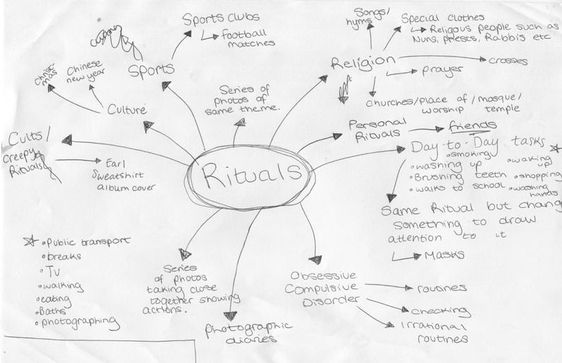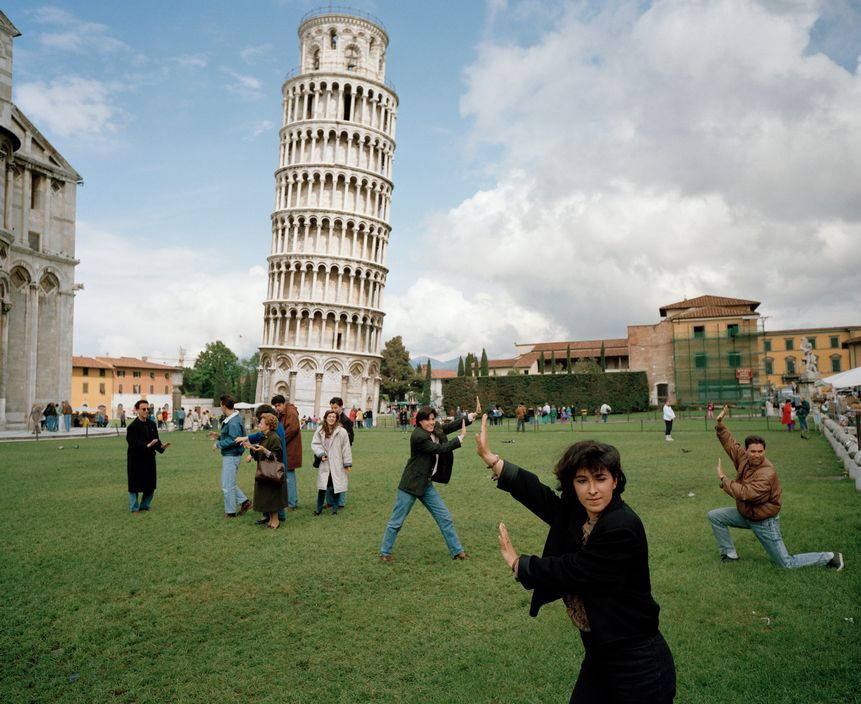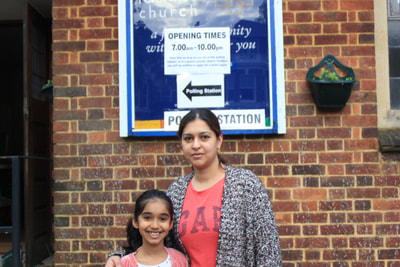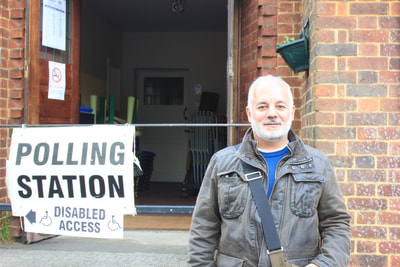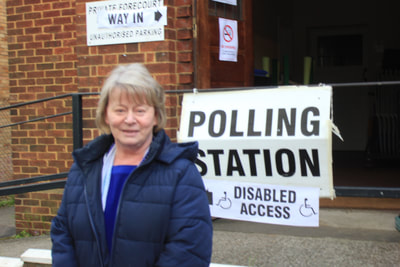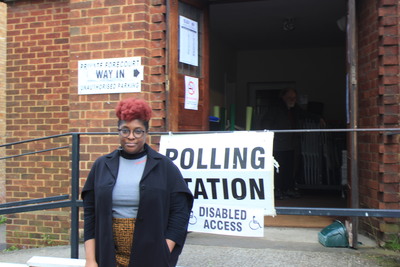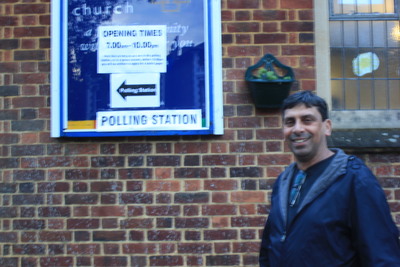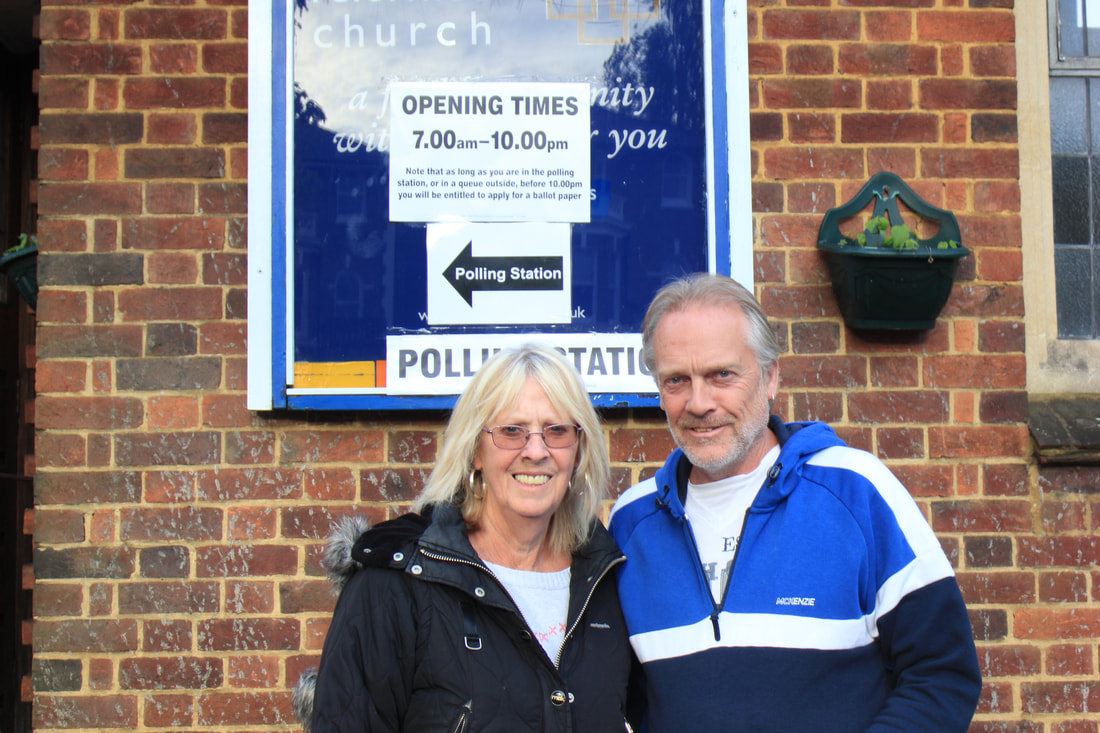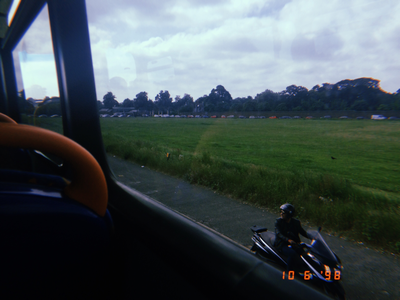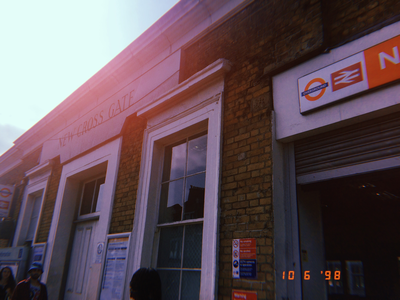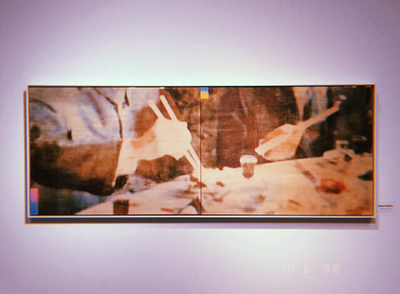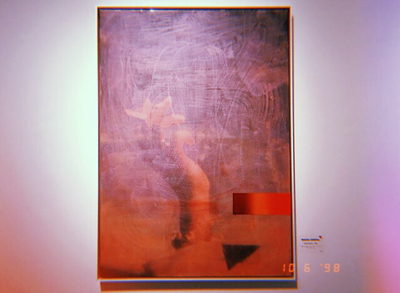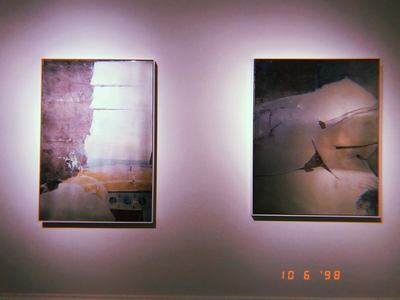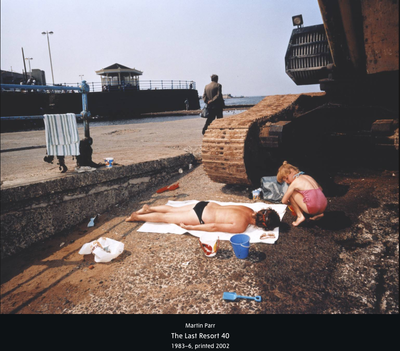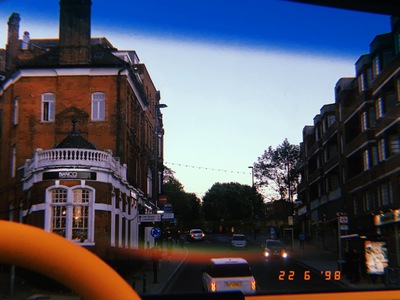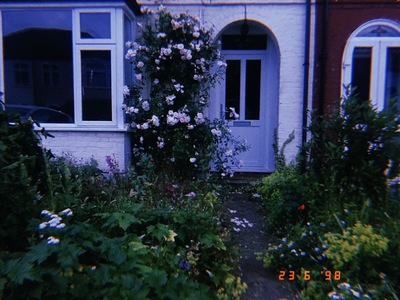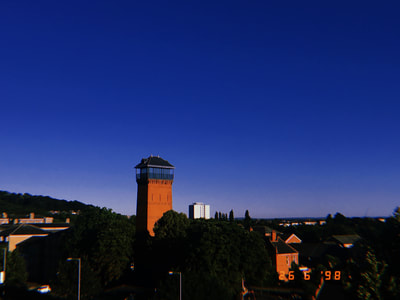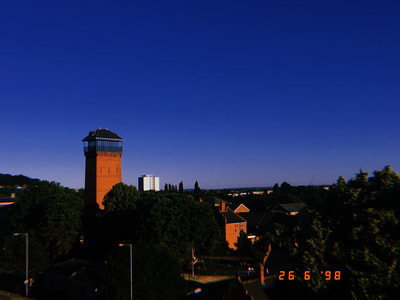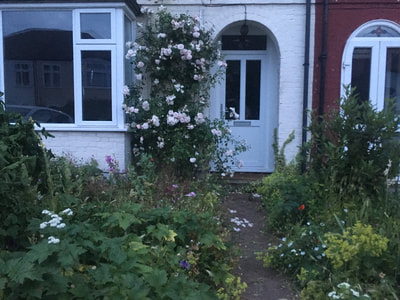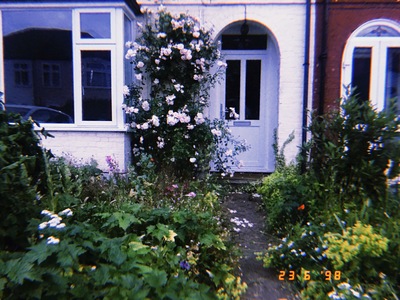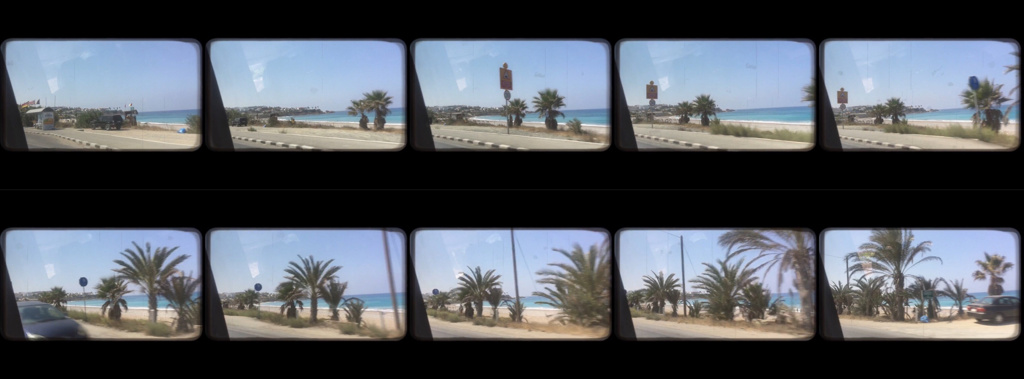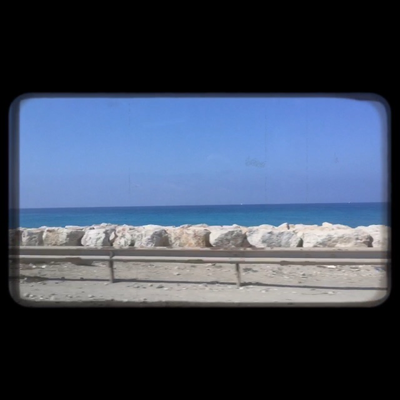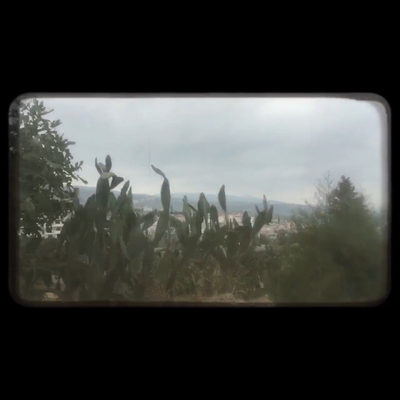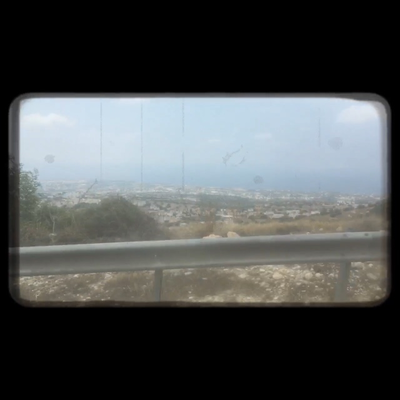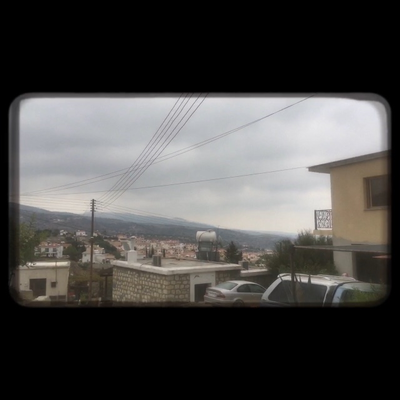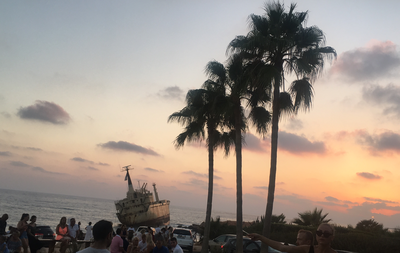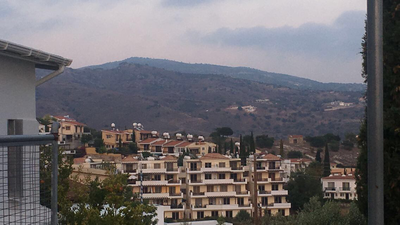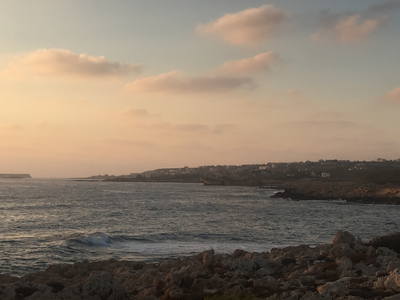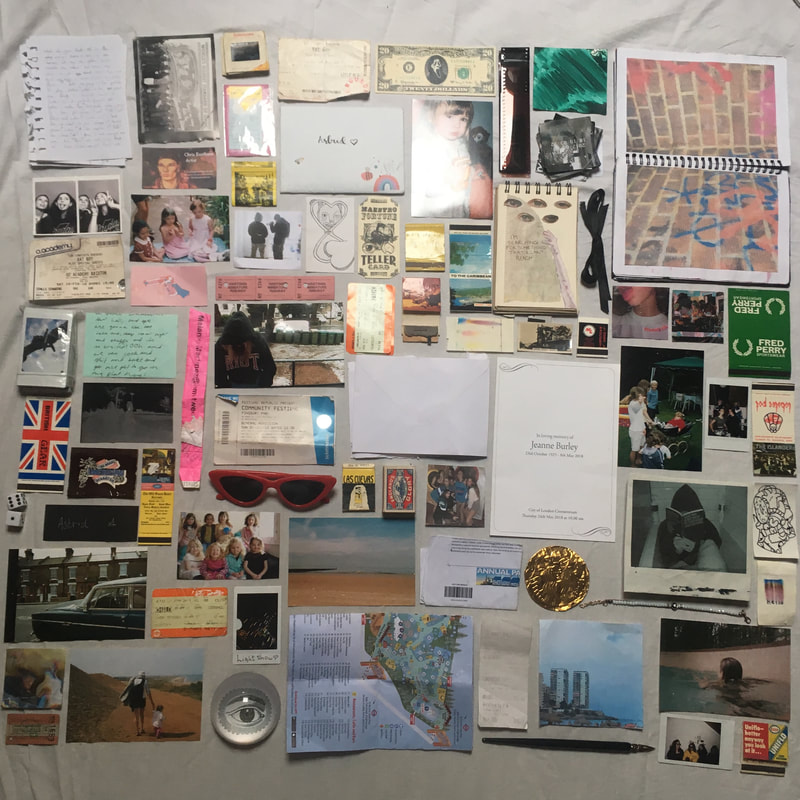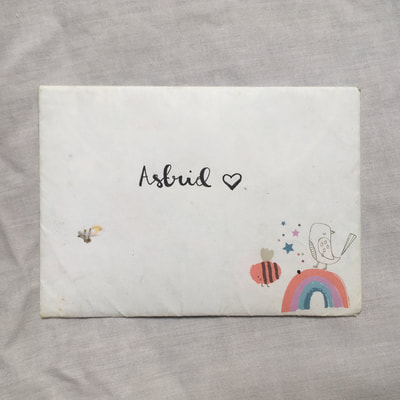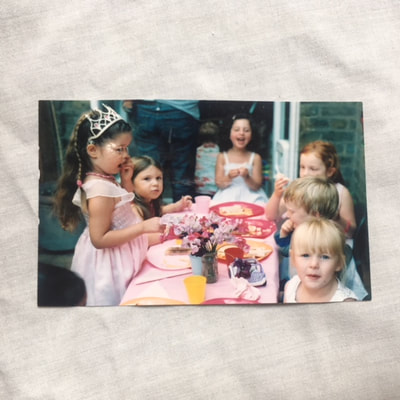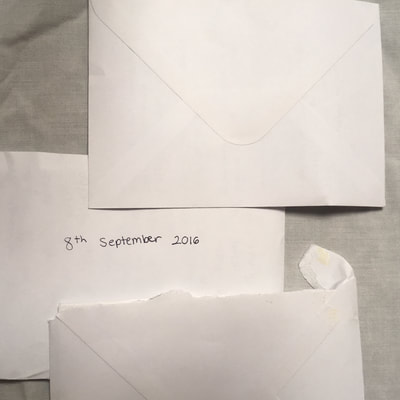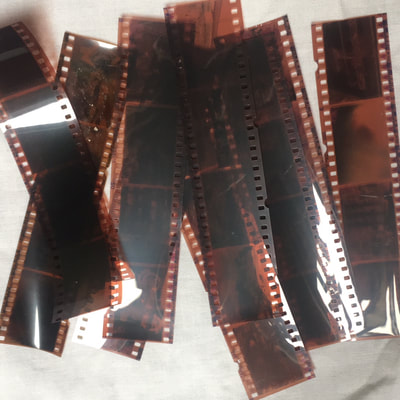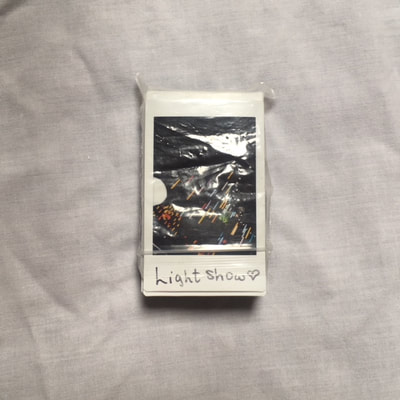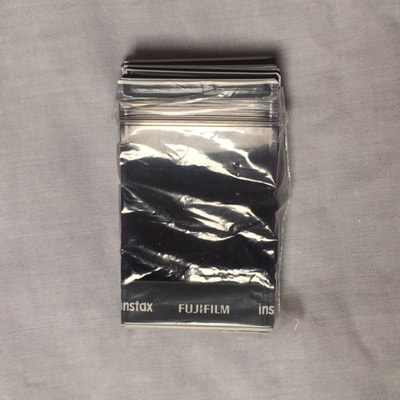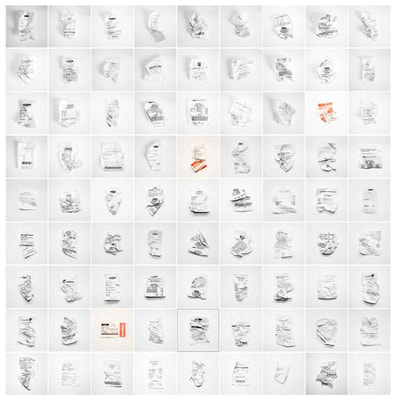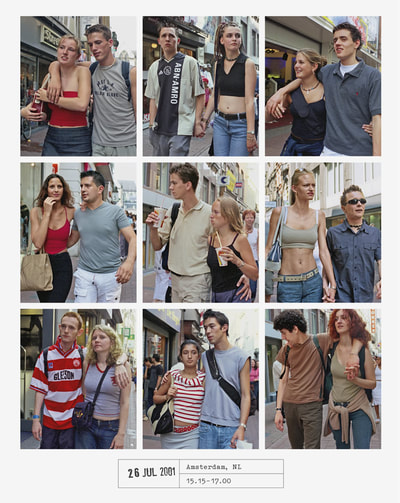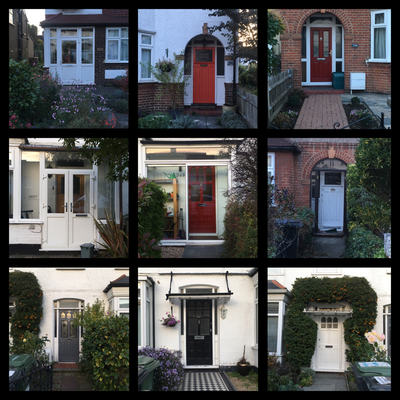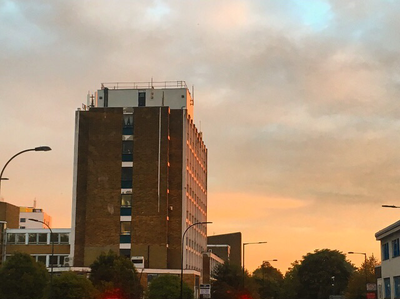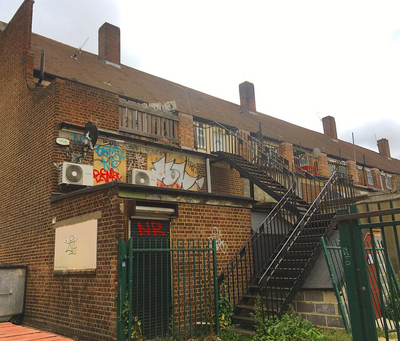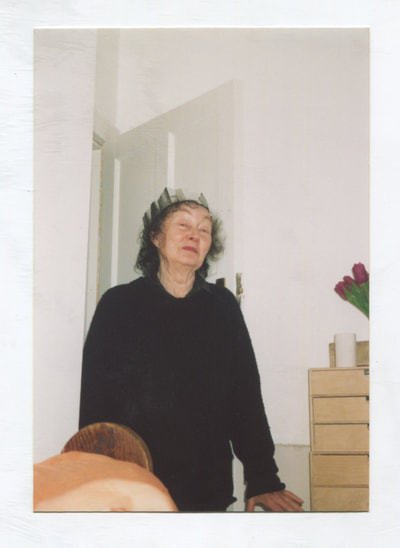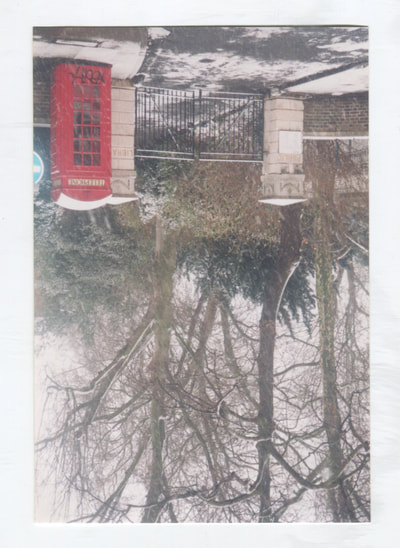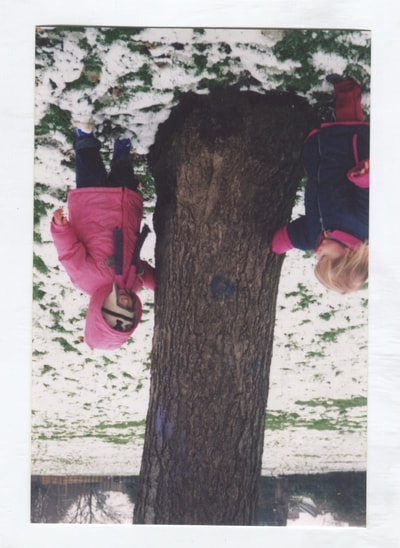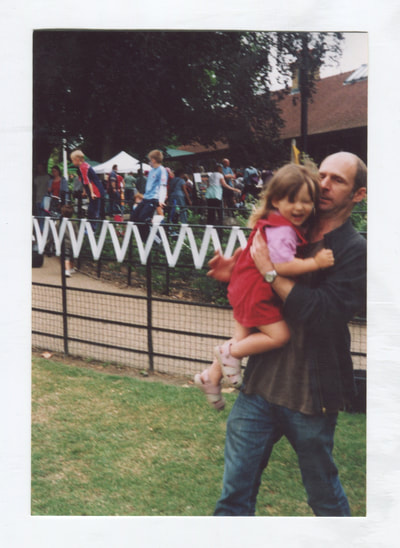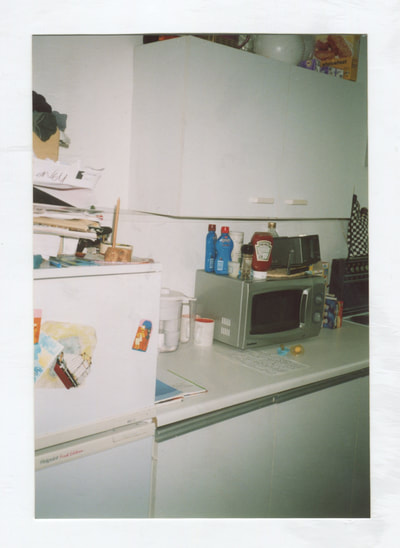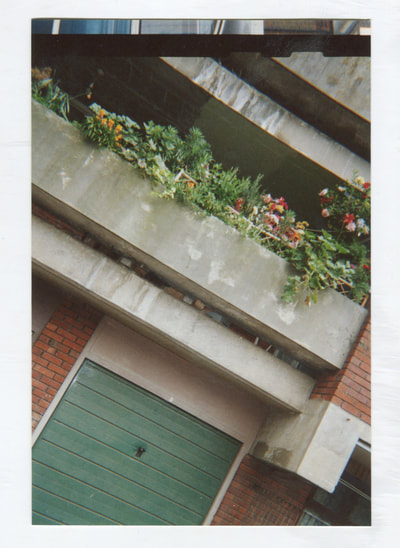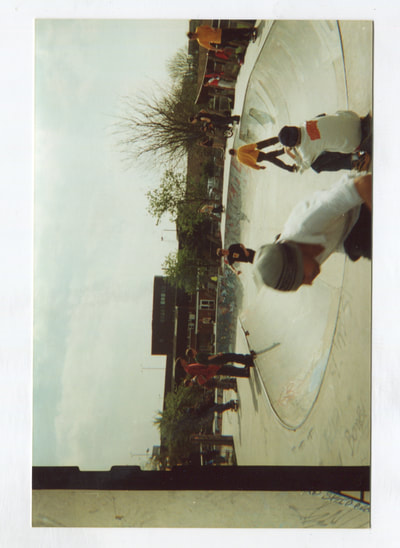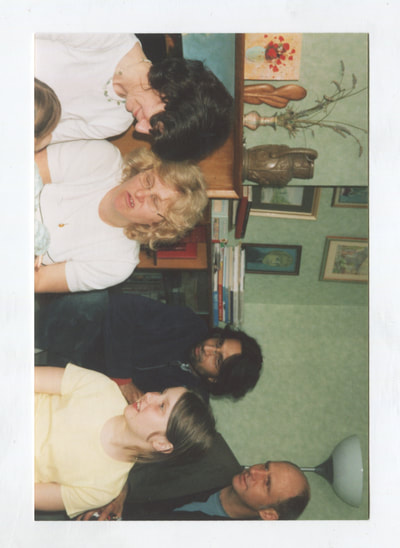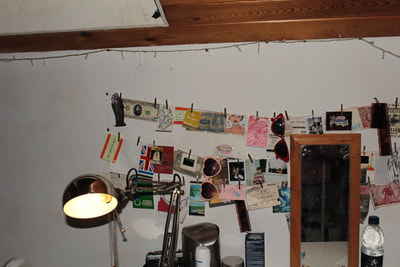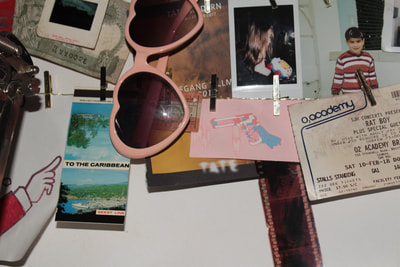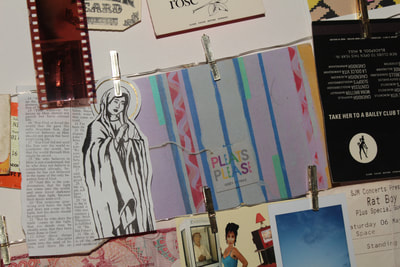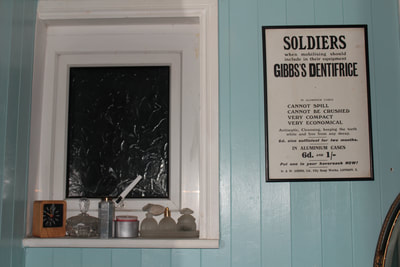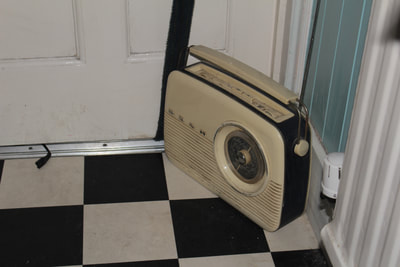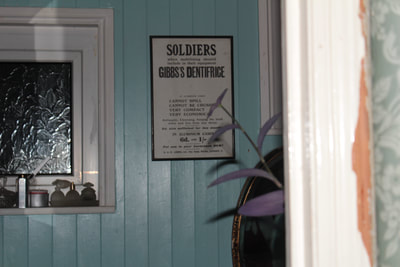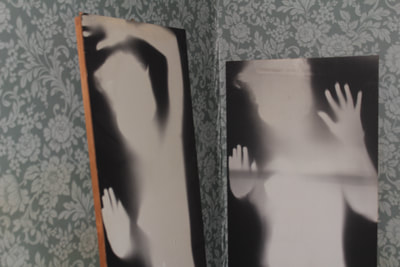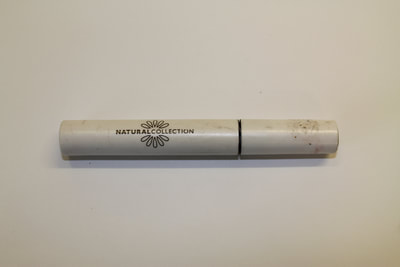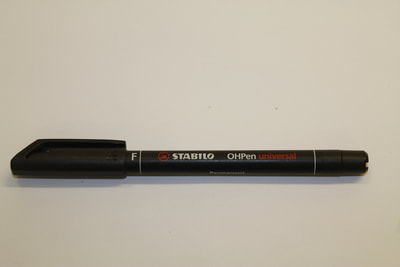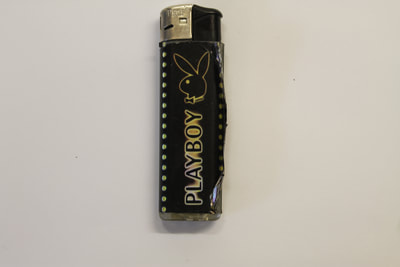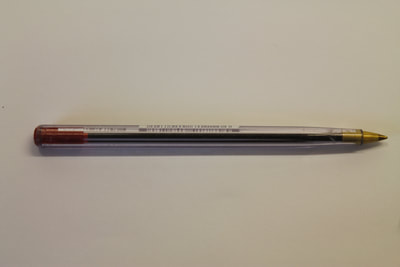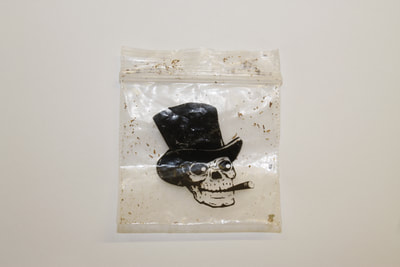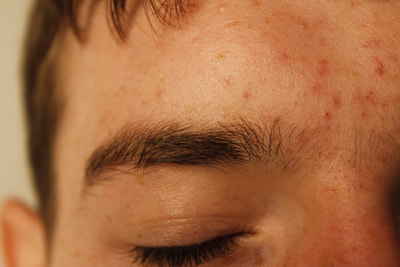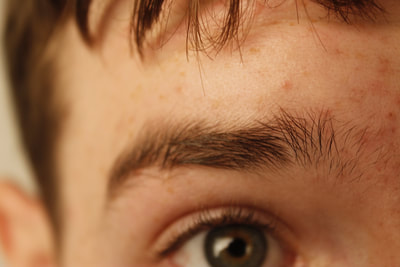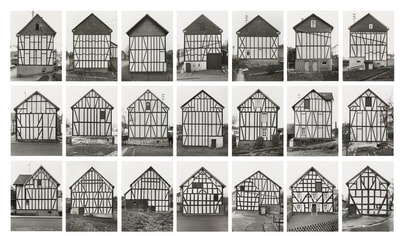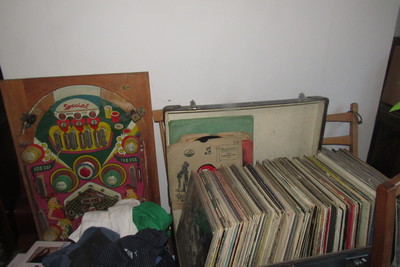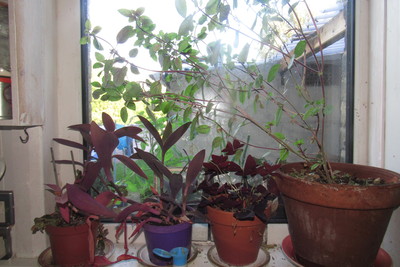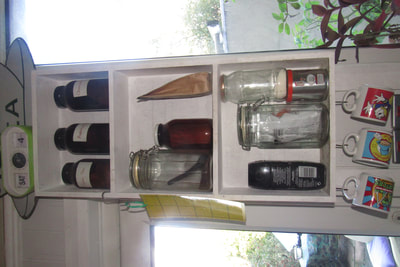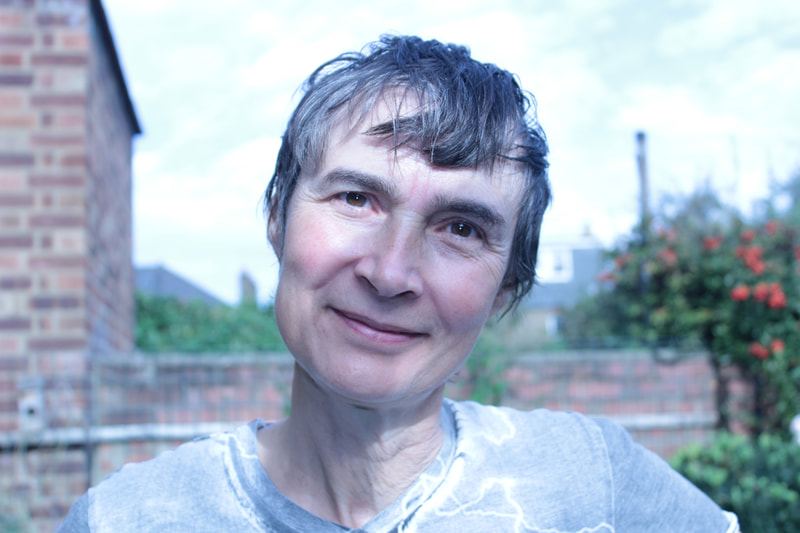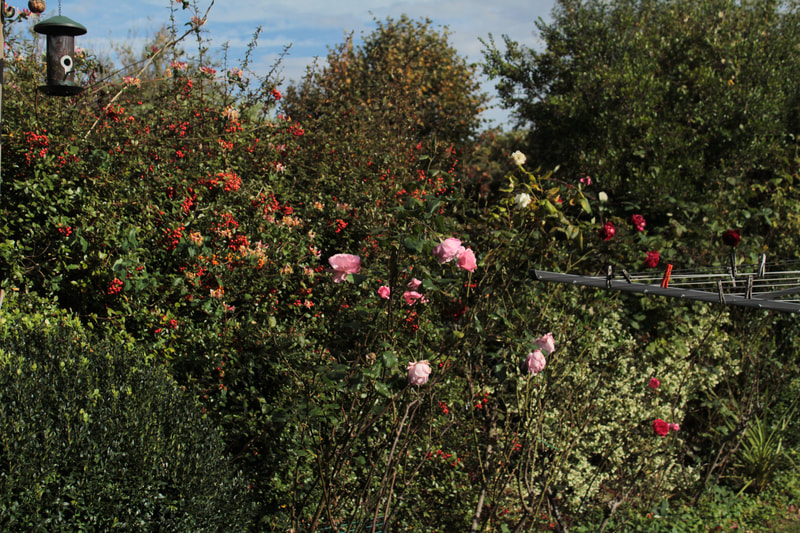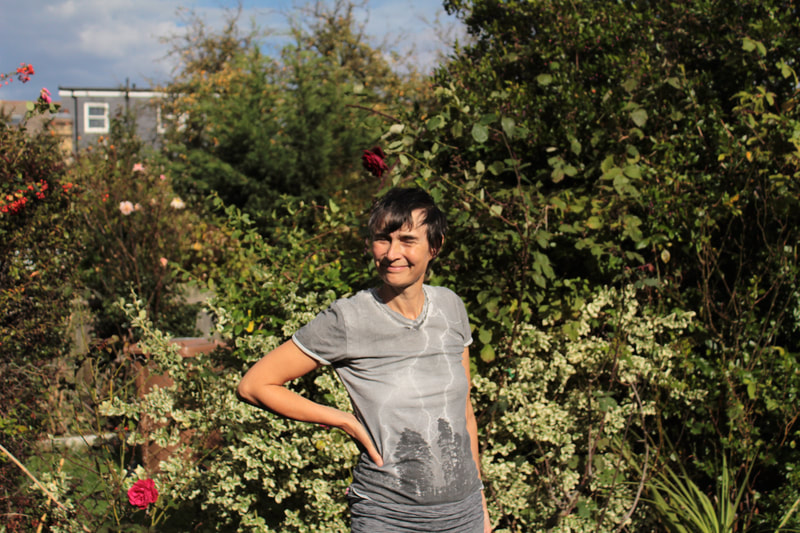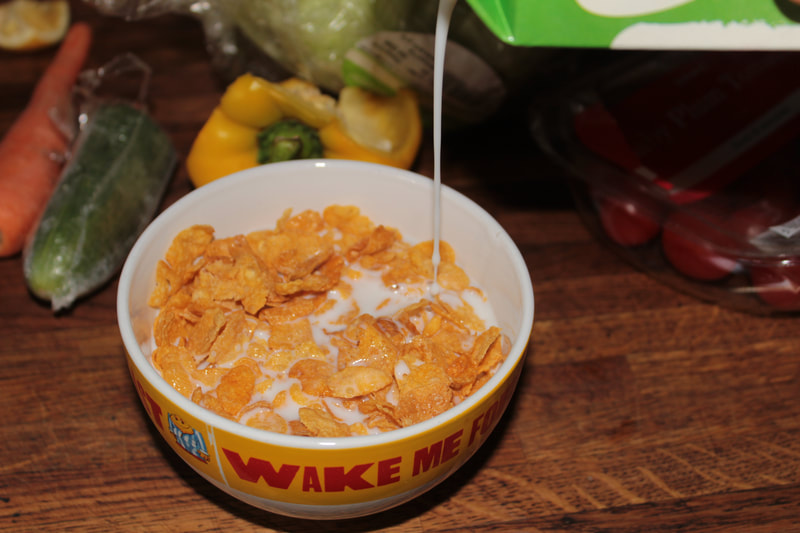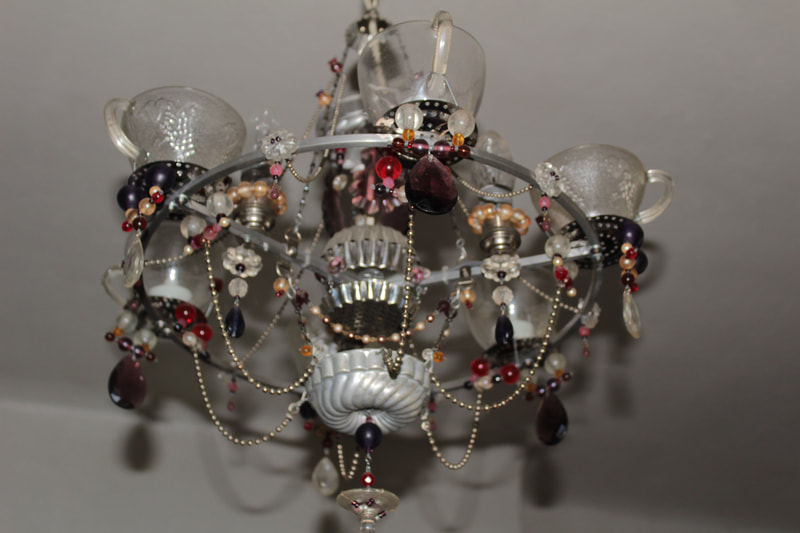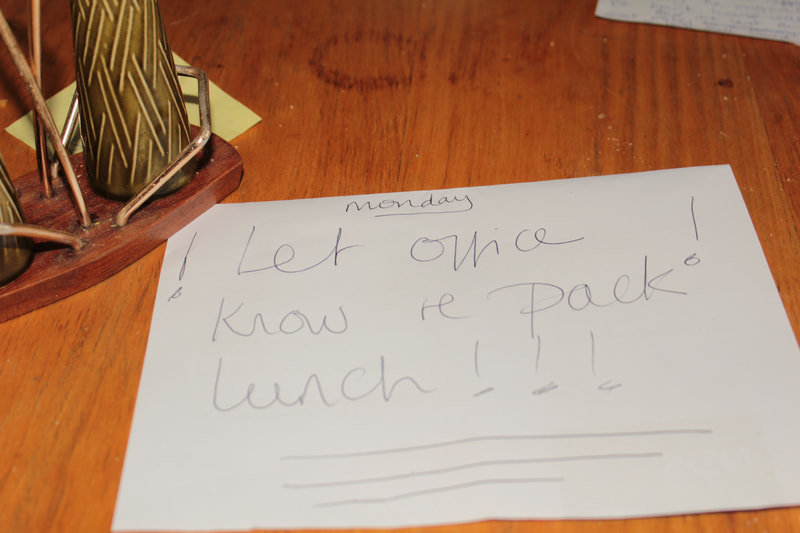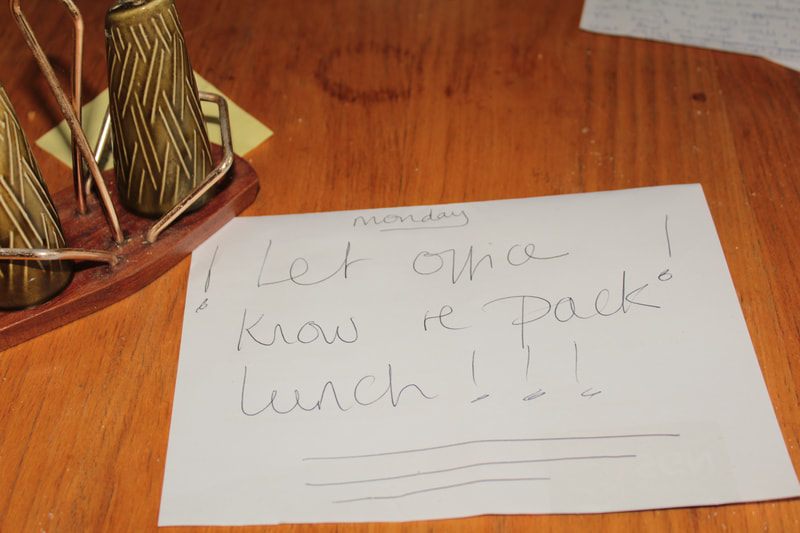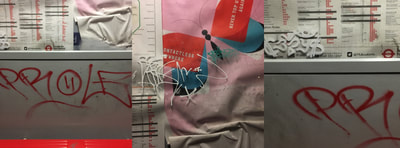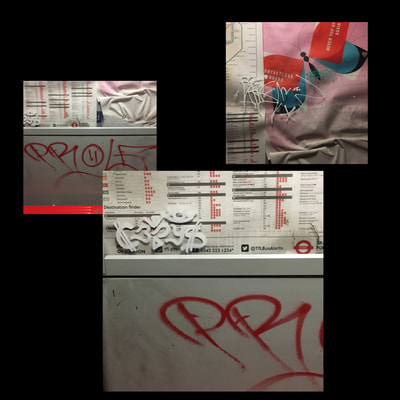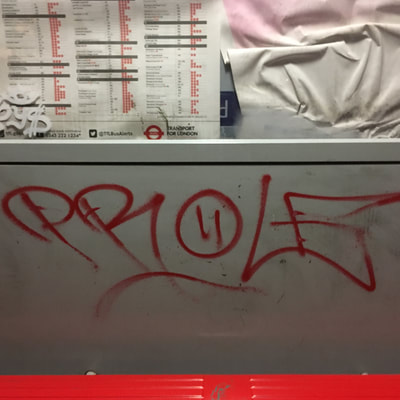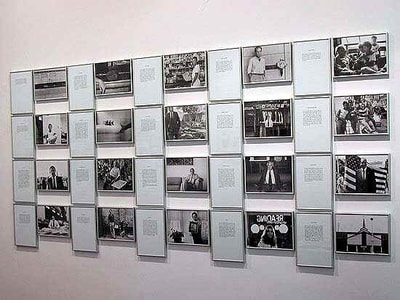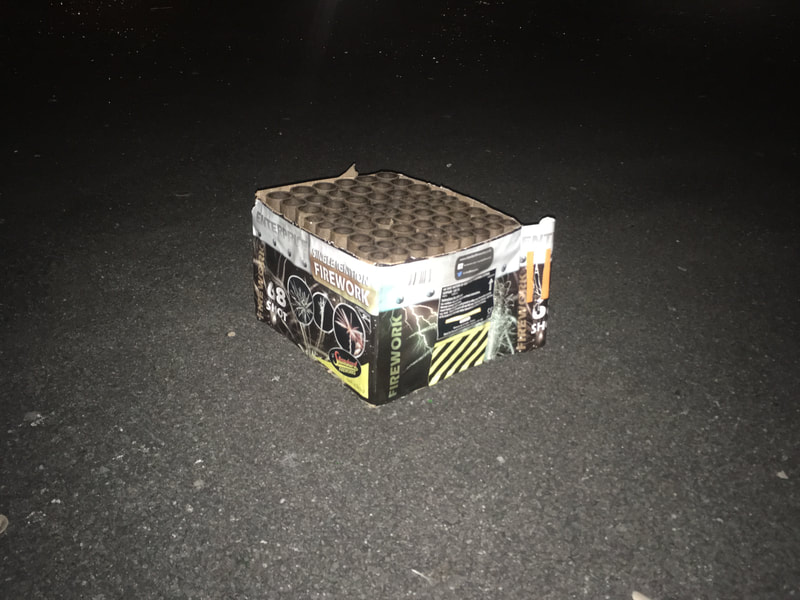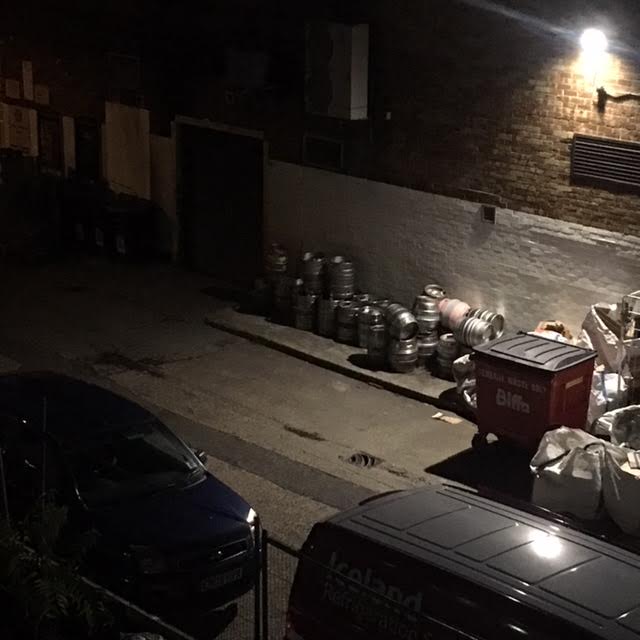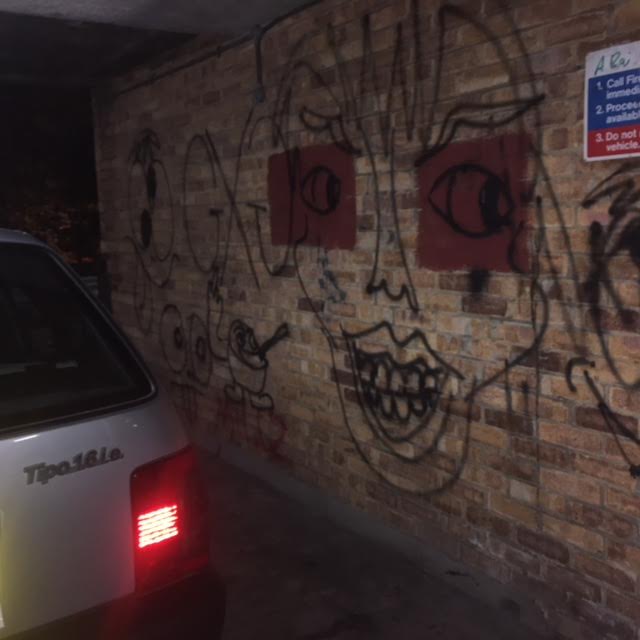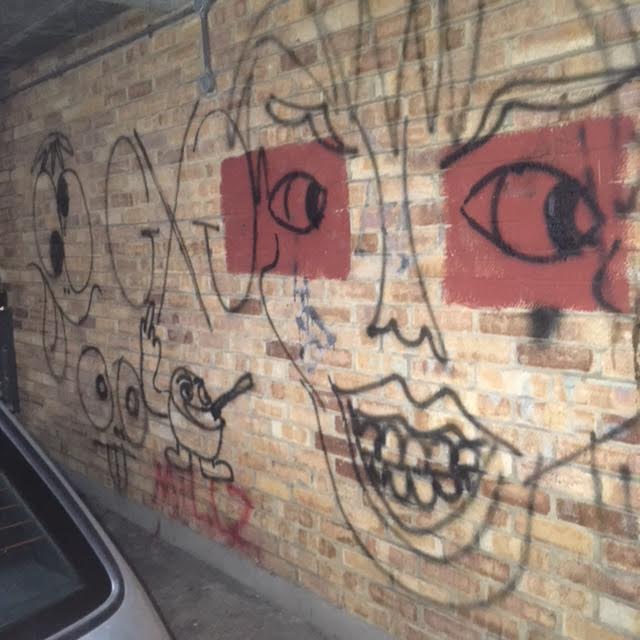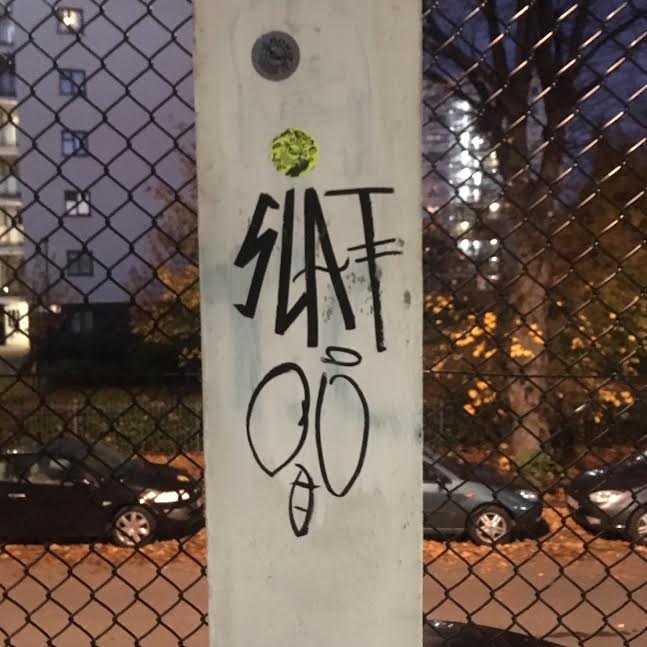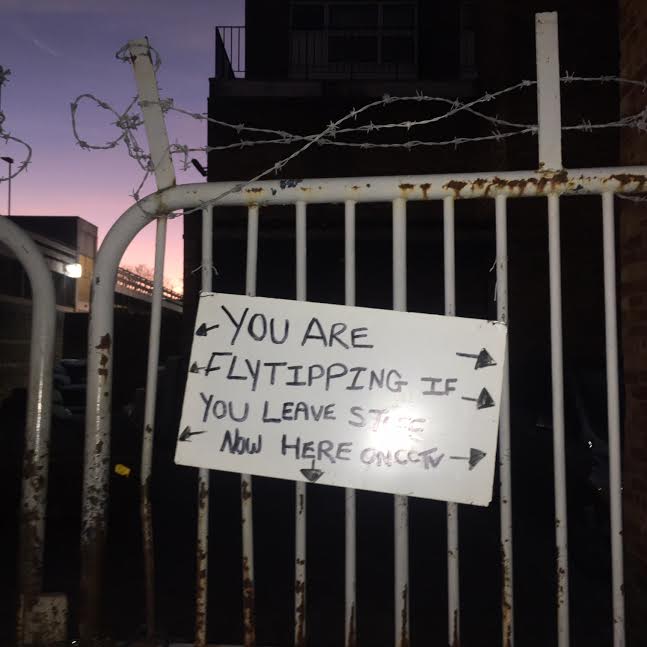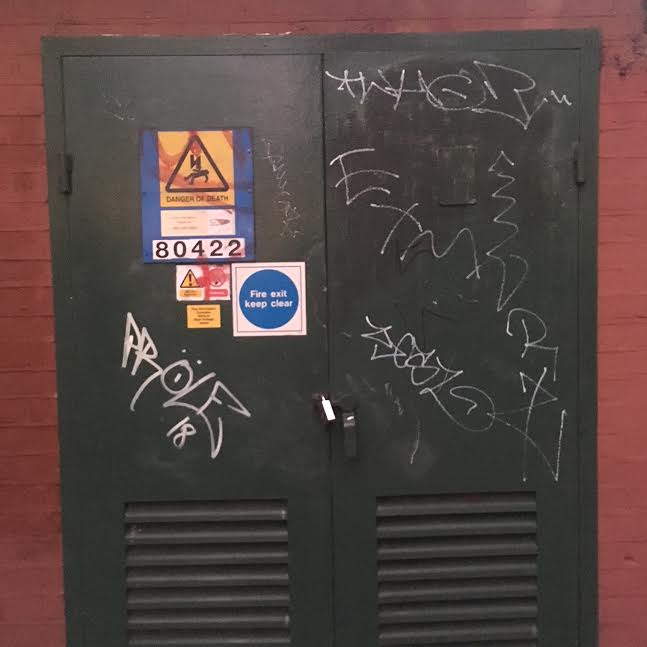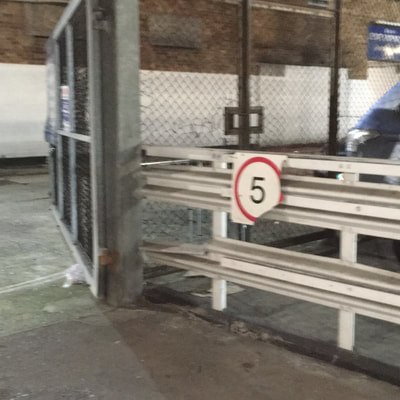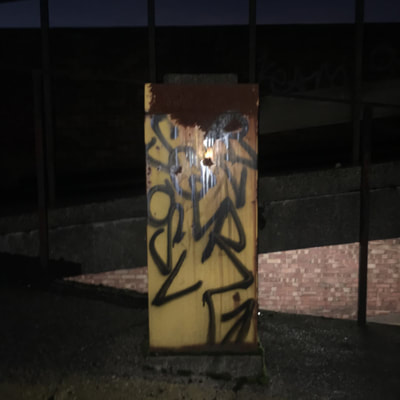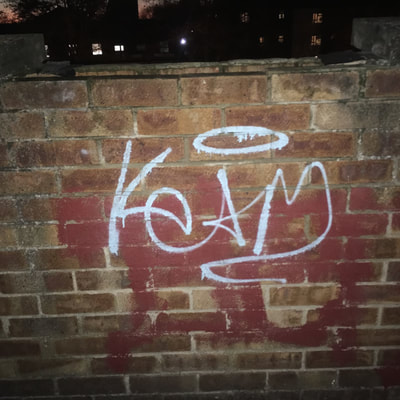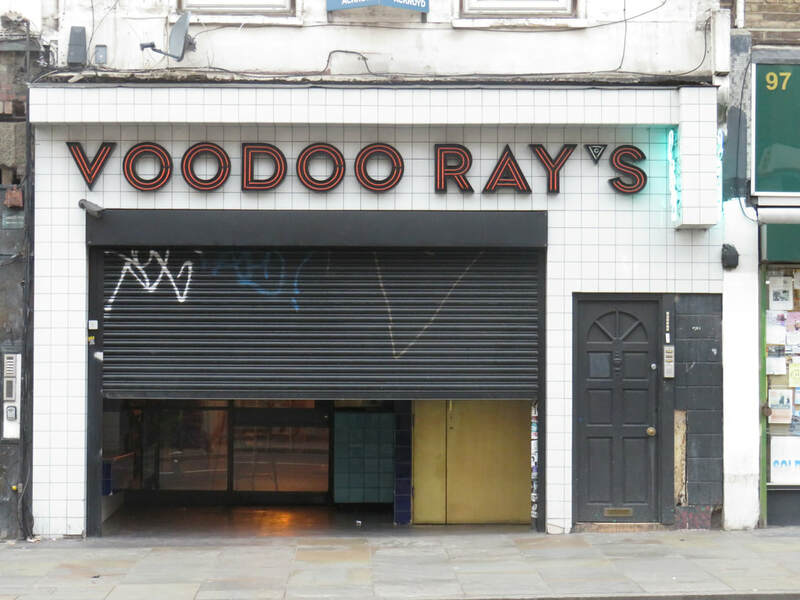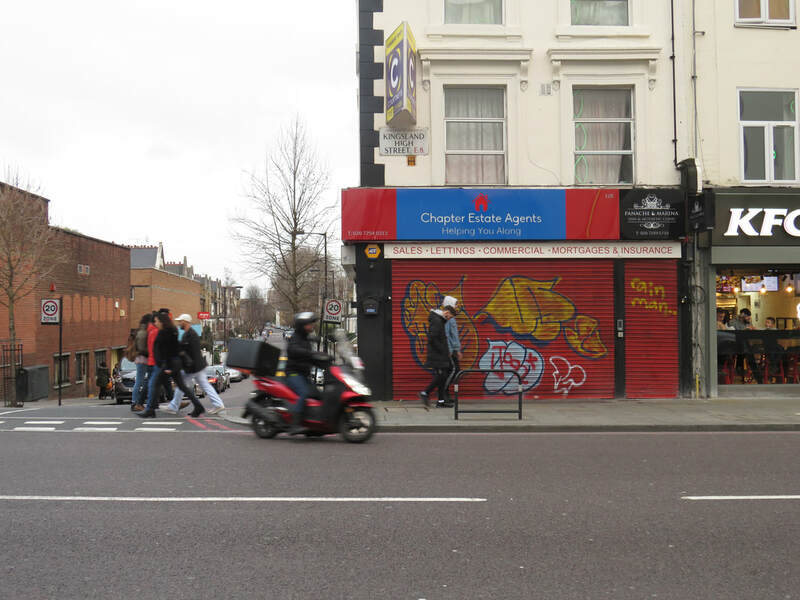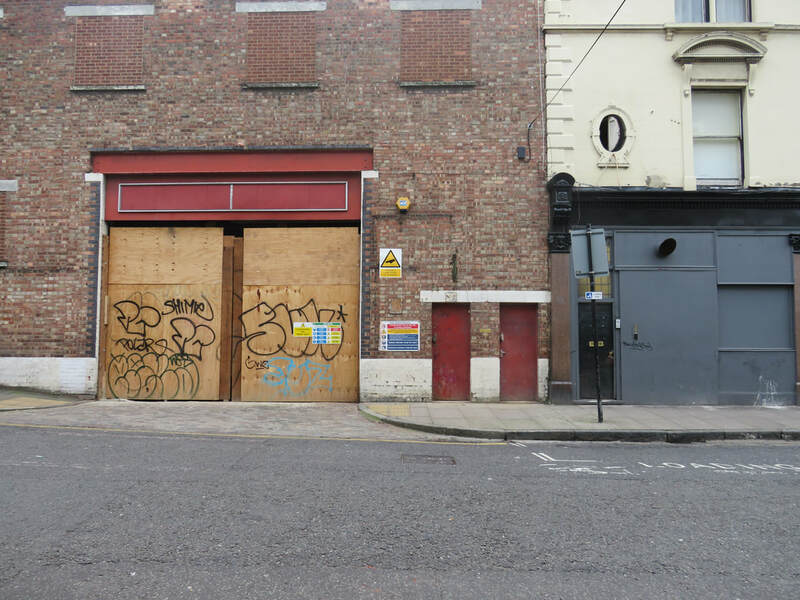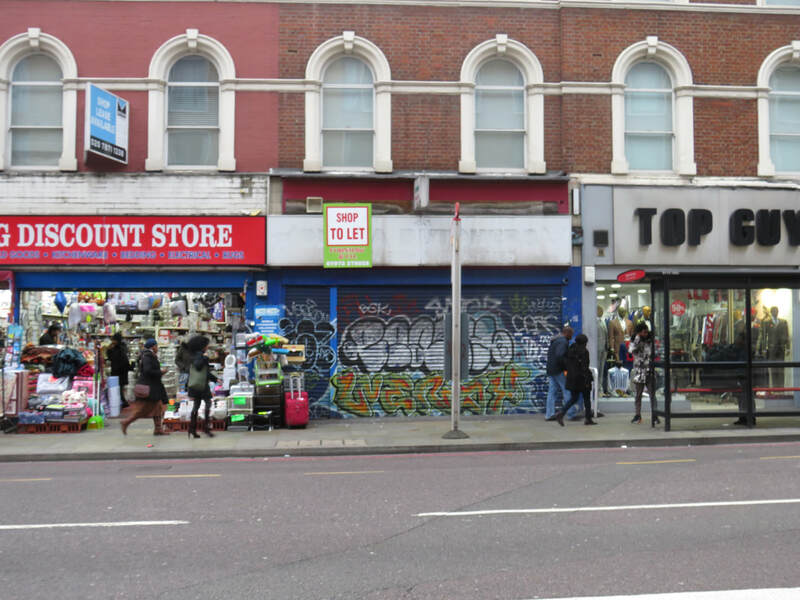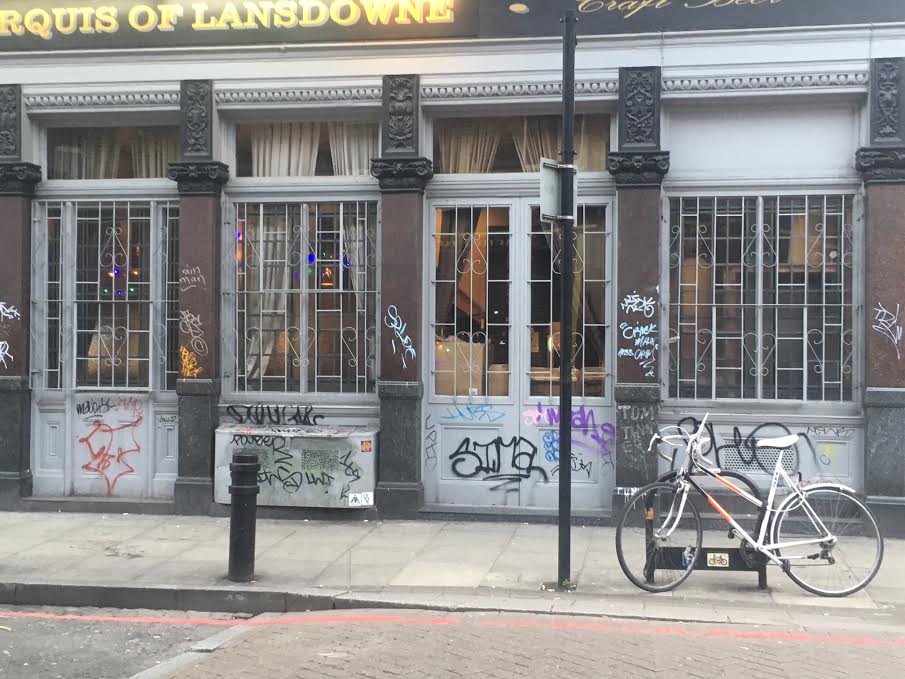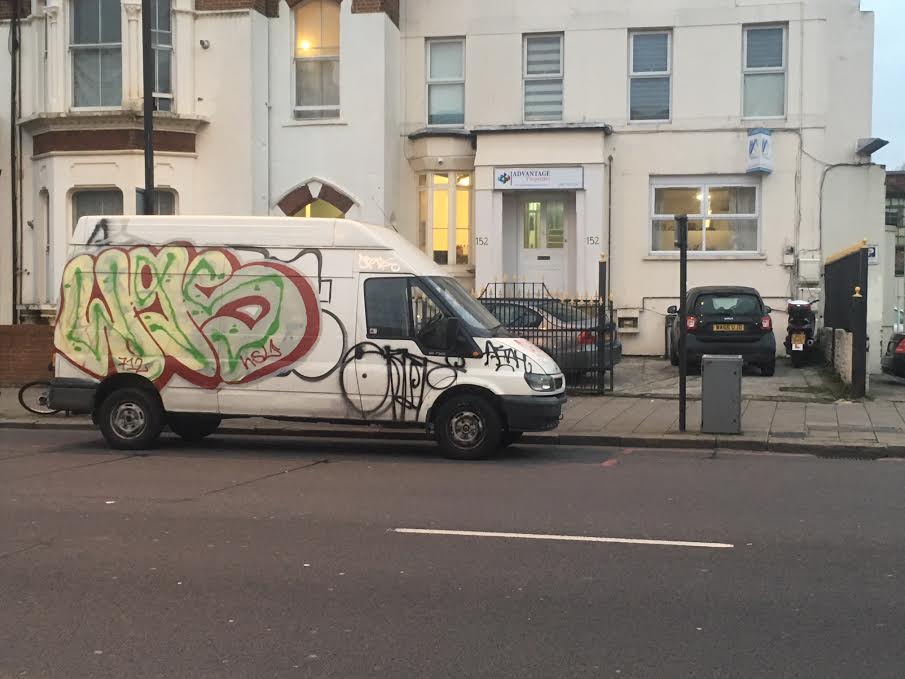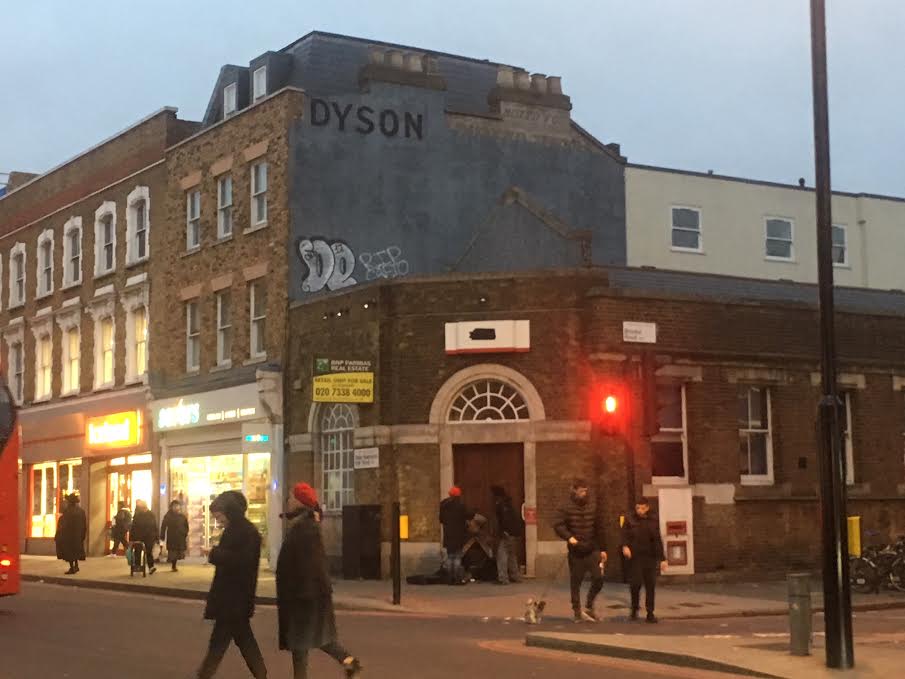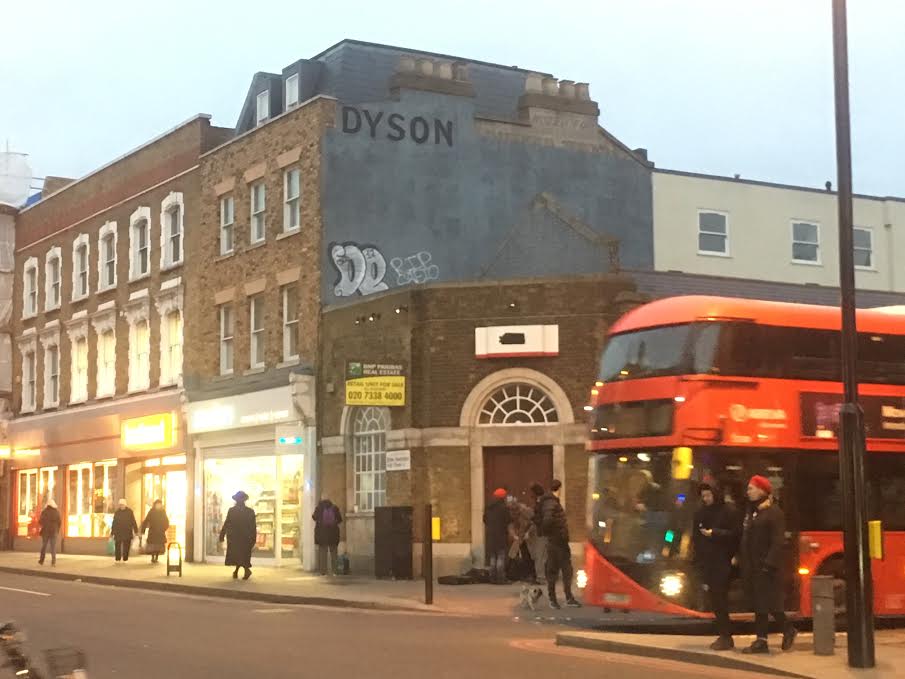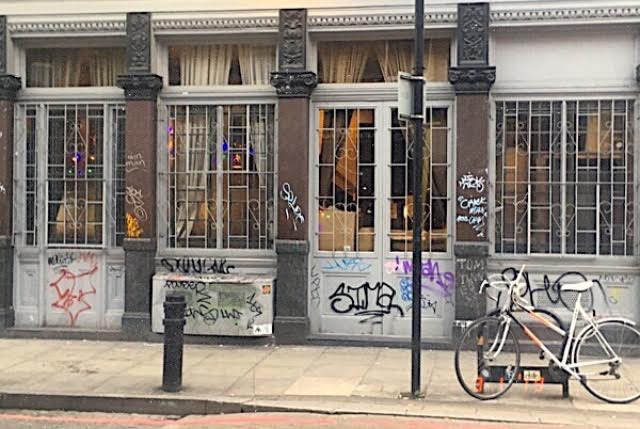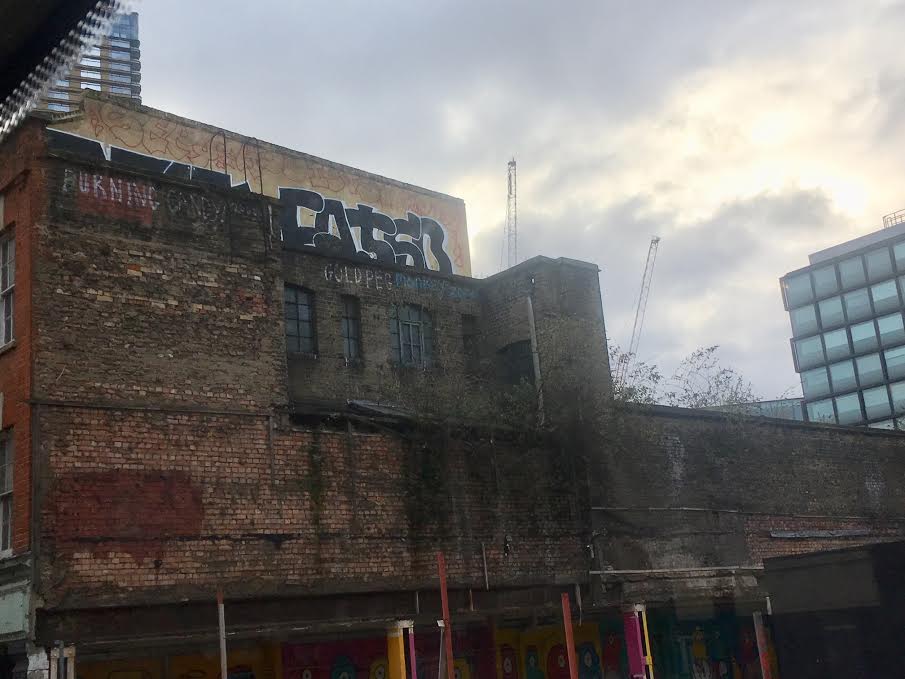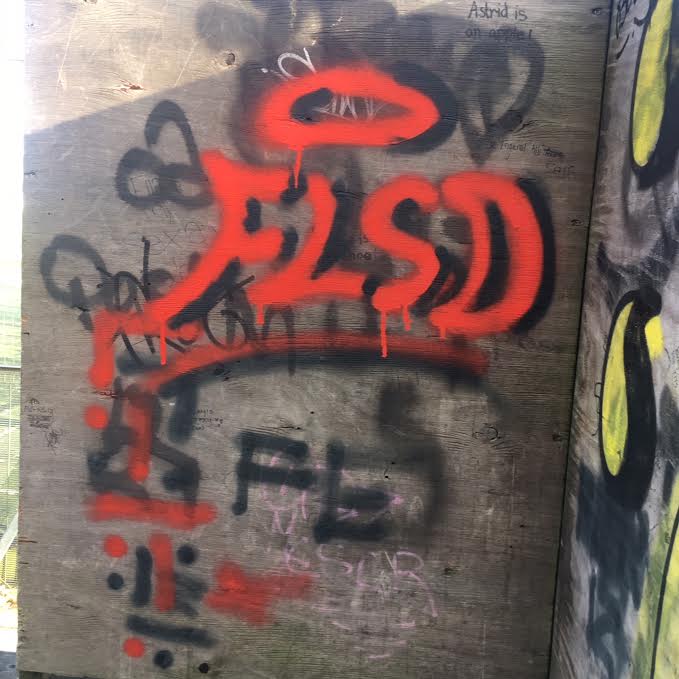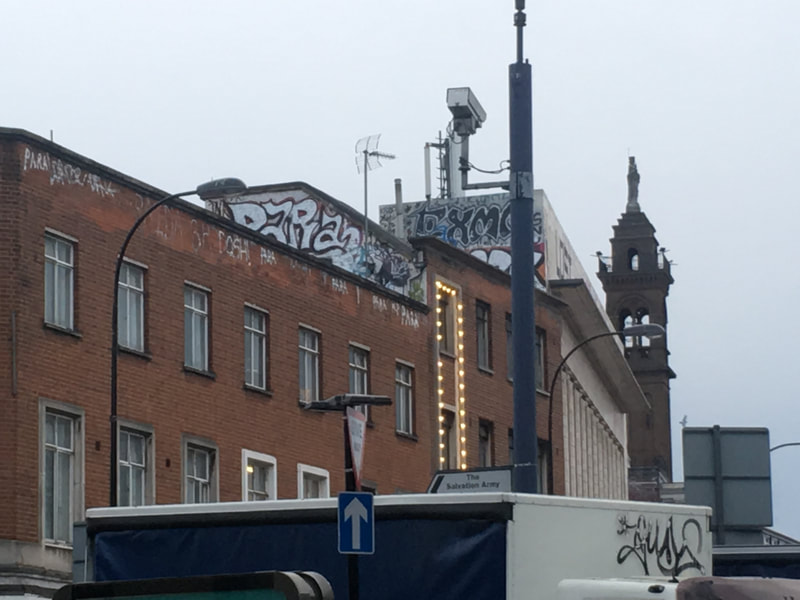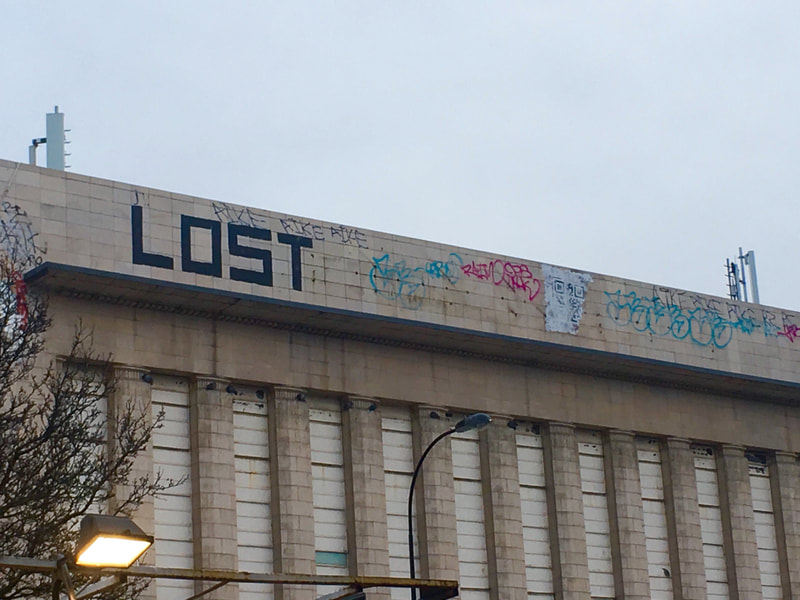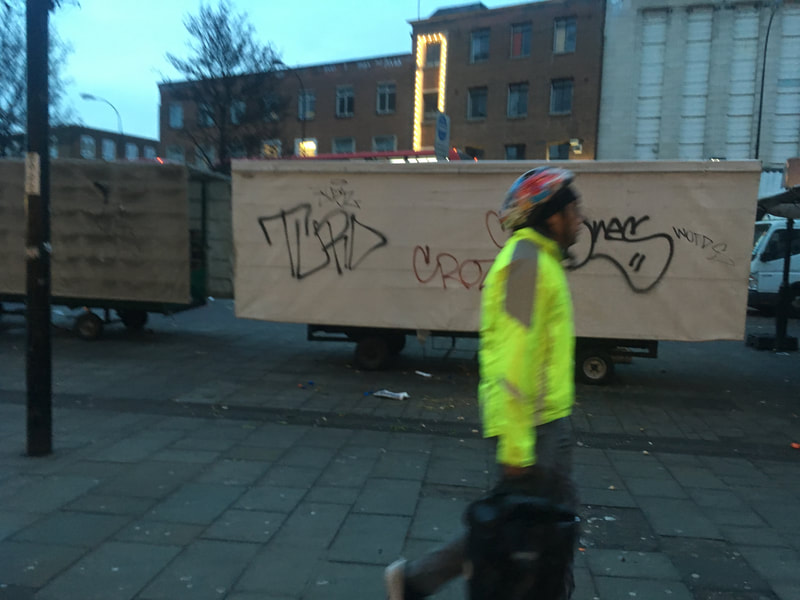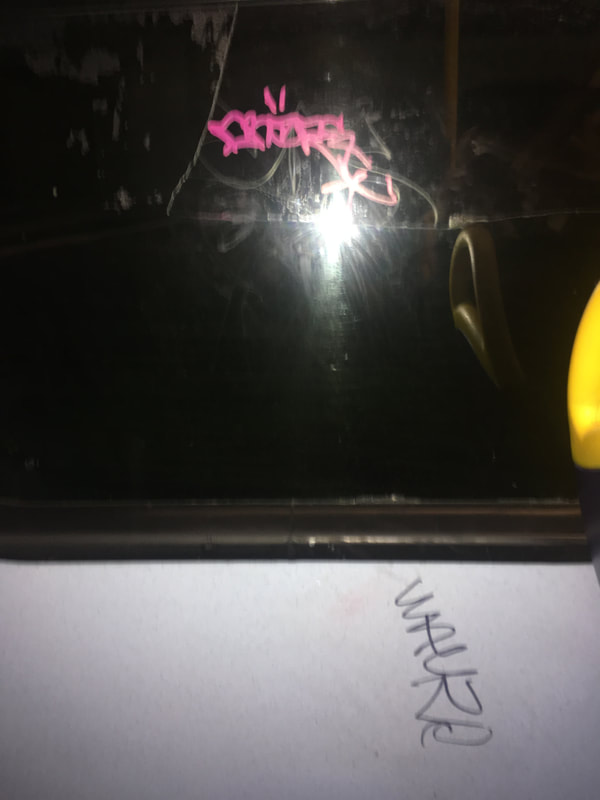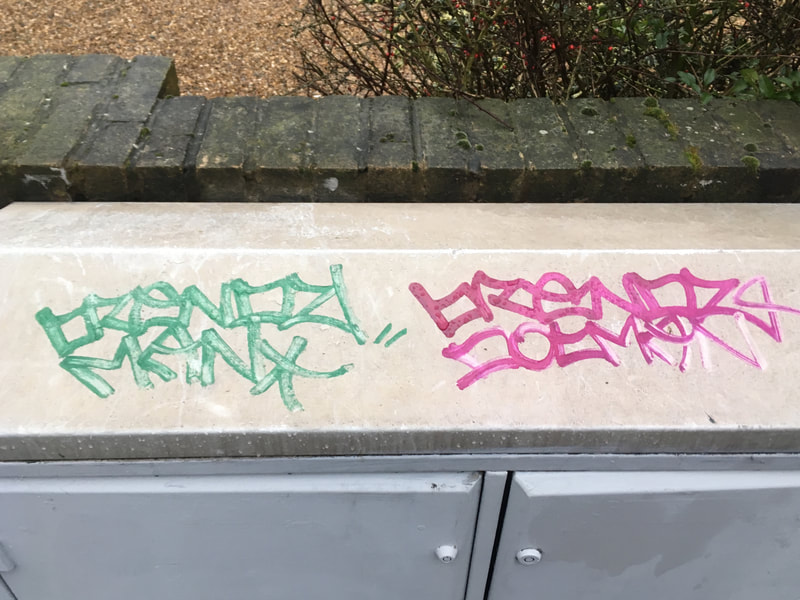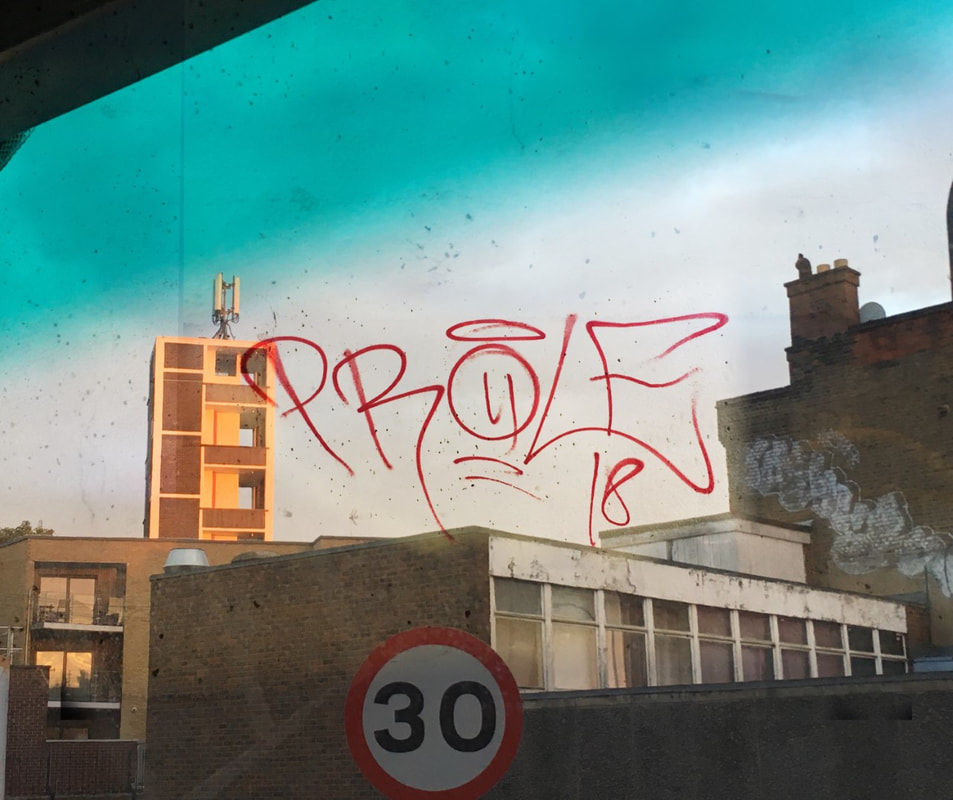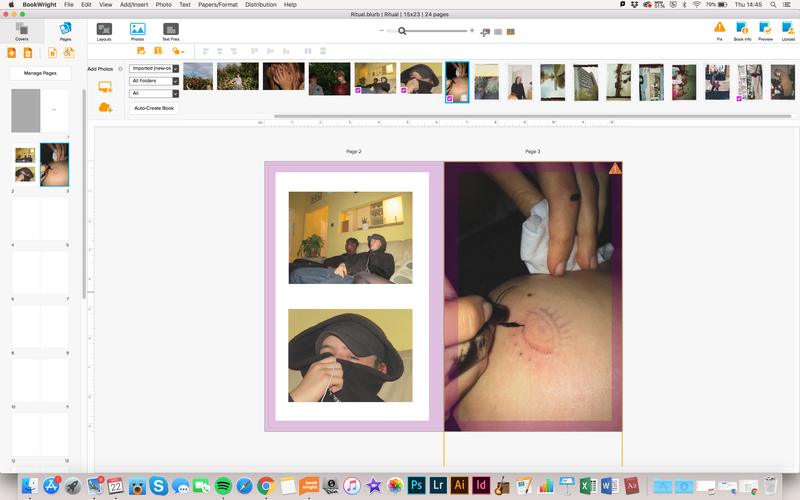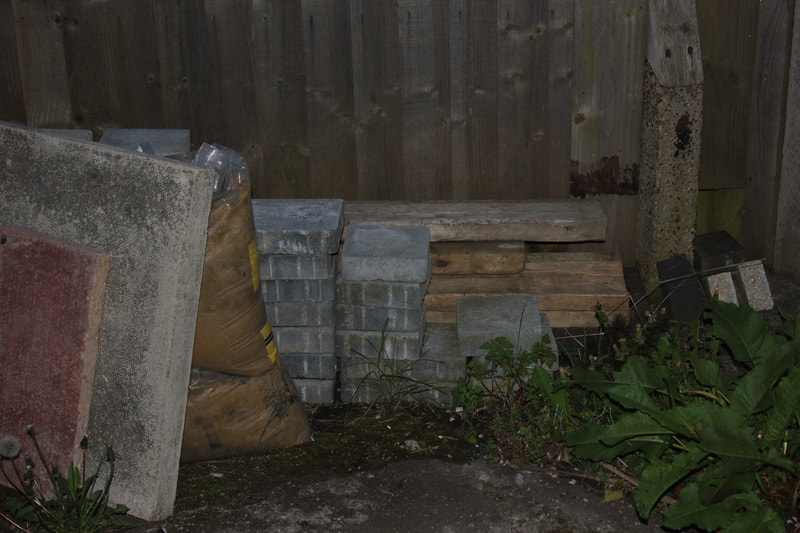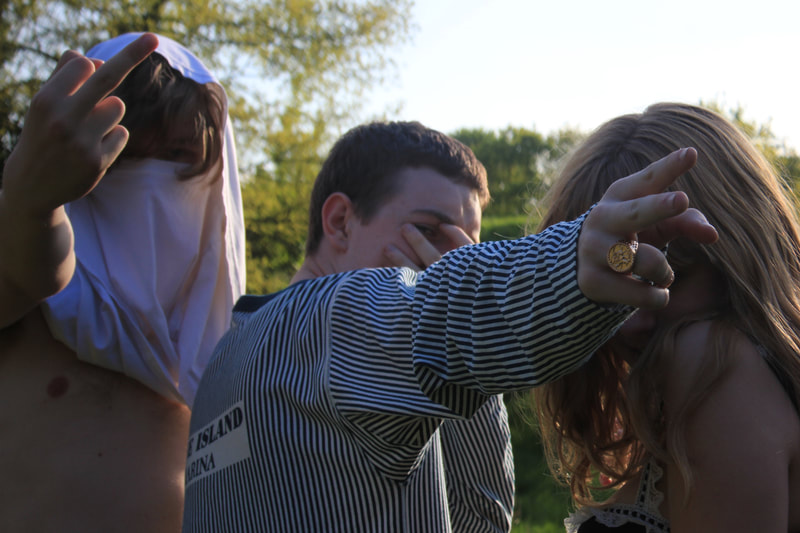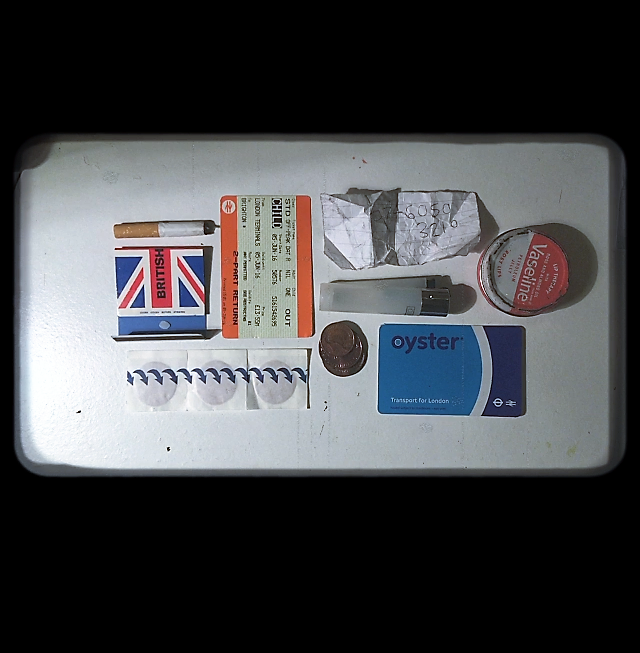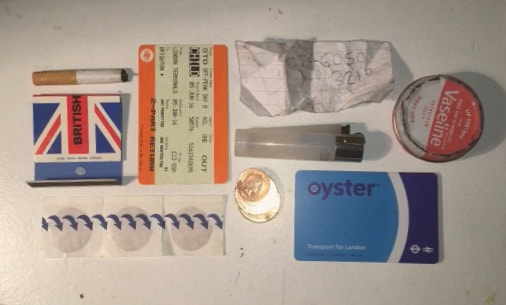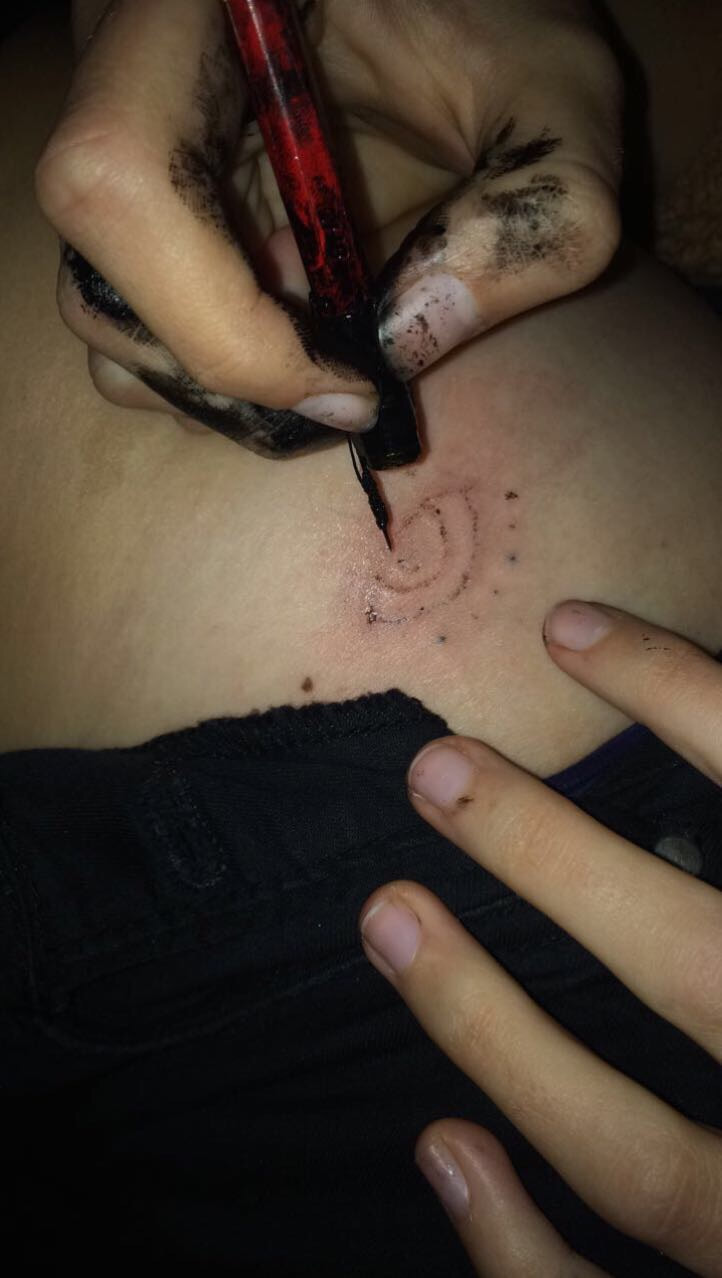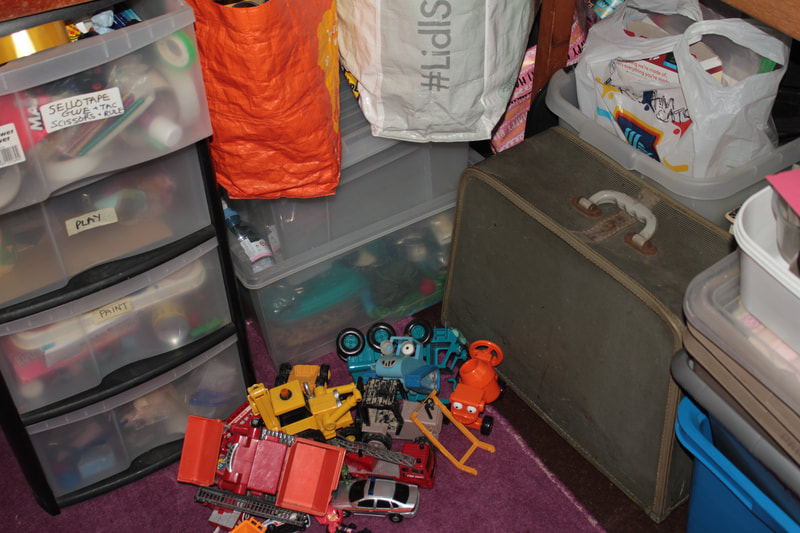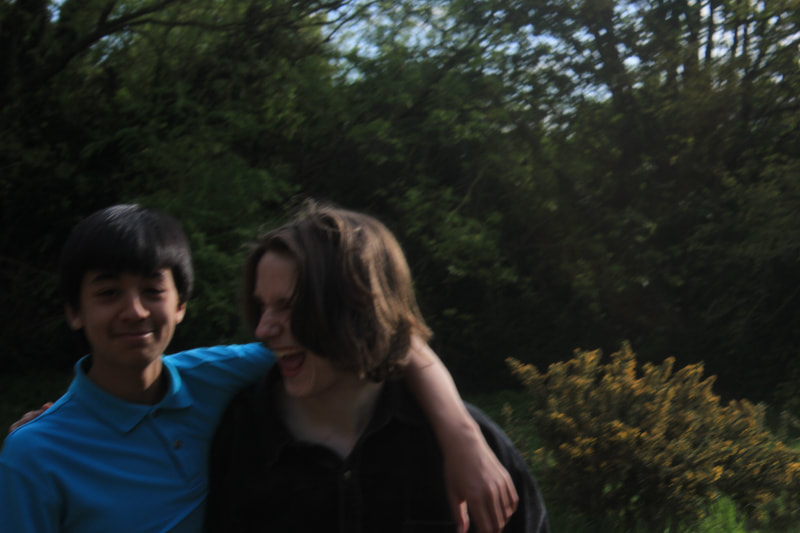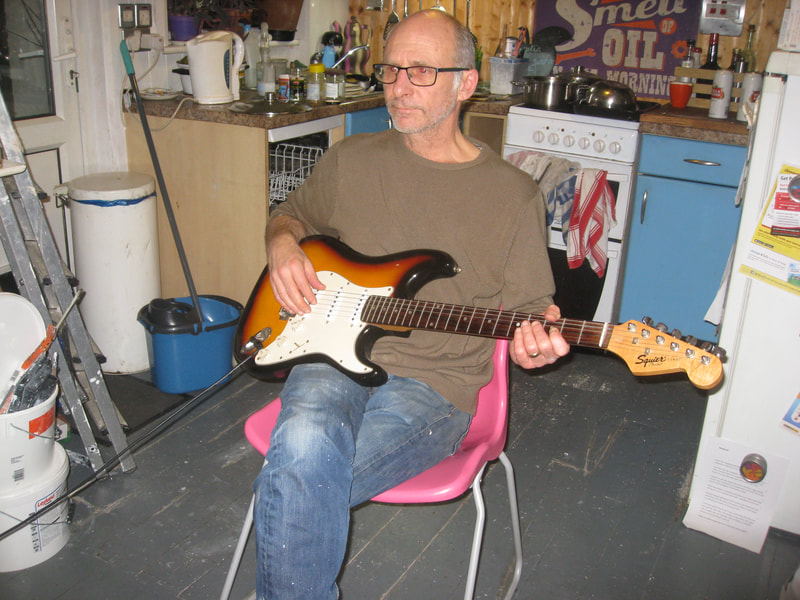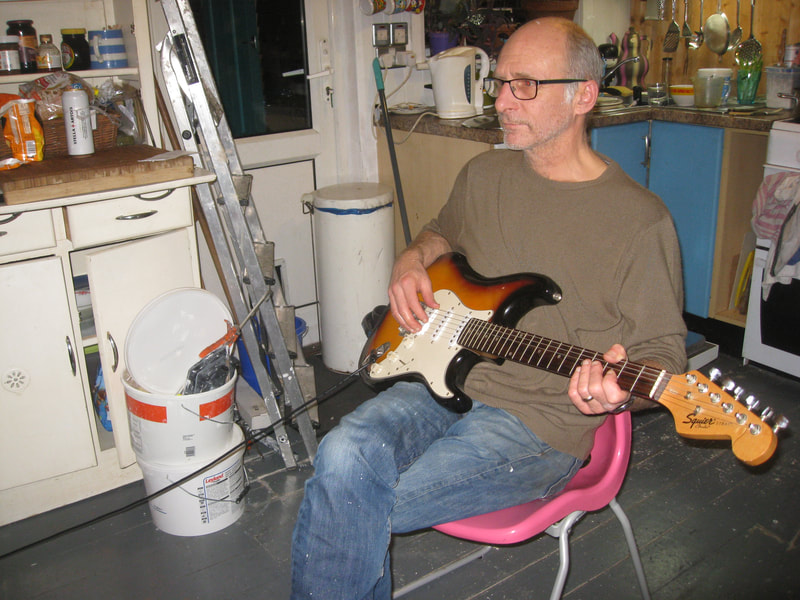Introduction
We were given a choice of 5 themes to make a response to. The choices were Unusual portraiture, openings, rituals, the human condition and architecture. I decided to go with rituals as it's almost the polar opposite of abstraction as abstraction is unrecognisable or distorted where as rituals is to do with routine and day to day tasks, meaning people will recognise and relate to the photos. I also like it as it is quite a broad theme and can be interpreted in many ways.
Research
|
I began my research by looking at the suggested artists for rituals. I was especially drawn to Nigel Shafran, Micheal Wolf and Martin Parr. I like there images as they portray everyday life and rituals, That I wouldn't pay much regard to, in a way that makes them interesting and aesthetically pleasing to look at. I like the slight sepia effect on the photos, which is there as the photos were most likely taken on old digital cameras, as most of these photos were taken around 1990. All these photos explore ritualism in some way, although this connections may be hard to find as the theme of ritualism changes depending on the photographer and there life and interactions. Shafran and Wolf both takes series of photos based on one specific idea for example washing up (photo 3) or Hong Kong break (photo 4), both are very ritualistic tasks which have been made in to pieces of art.
|
|
Website links
|
|
I watched a youtube video talking about the history of rituals and their importance, It spoke a lot about the decline of rituals in modern England due to certain historical events such as Nazi Germany, which have tainted our idea of rituals. Now days most 'formal' rituals are based around sports or religion. this contrast ancient rituals which helped people to self reflect and deal with emotions such as guilt, sadness or appreciation. Rituals have become far less common as they pose as an inconvenience in peoples busy lives. I found this video useful as it gives me some background and understanding of my theme. I also think the idea of rituals being tainted in modern society could be explored through photography. |
Image analysis
|
This photo was taken by Martin Parr. It draws attention to a ritual by showing it from another angel. This photo explores the photographic ritual of taking photos showing tourists holding up the leaning tower of Pisa. I find this photo interesting as it is aesthetically pleasing through the contrast and depth to the image but its also proving a point as well as exploring the theory of photography and shows how a photo of the same thing but from a different angel makes a major difference. The repetition of one position in different fields of depth further explores the possibilities of photography. |
Voting Ritual
|
I stood outside my local polling station and took photos of people after voting. Voting is a ritual as it is an annual routine in which people have there say in politics. It can also be said to explore the rituals in modern day society and what rituals are seen as important in society. I especially liked the photo on the left as its in focus and it seems to capture the subjects emotion. Unfortunately a lot of the photos are blurry as the camera was on a too long exposure time and i couldn't work out how to change it.
|
Features of this public ritual
|
|
Some other possible public rituals to photograph
- visiting a place of worship
- going to a football match
- celebration (for example birthday party, wedding, funeral)
- going on holiday (sunbathing, eating ice-cream, swimming)
- shopping
- getting your hair cut
- going to an exhibition
- public transport
- karaoke
- going to school
Some examples of private rituals
- washing your hands
- habitual behaviours (chewing nails, tapping, playing with hair)
- smoking
- doing homework
- prayer
- sleeping
- washing up
- preparing food
- taking a photograph
Plan
For the next 4 weeks I'm going to focus on a couple of the rituals I listed above, I will make typologies with numerous photos all related to one specific ritual. Some Rituals I'm particularly interested in are religious rituals, Celebrations, smoking, habitual behaviours and washing up or washing hands. I'm going to aim to take around 25 photos for each ritual I explore.
Artist Research / Exhibition homework
Ernesto Cànovas ‘fake news’
Halcyon Gallery
144/146 Bond street
Ends on the 10th June
Halcyon Gallery
144/146 Bond street
Ends on the 10th June
I find Cànovas’ work in fake news captivating as it explores contemporary issues, politics and is influenced by current events such as the 2016 Us presidential election, focus on women’s rights following the #MeToo campaign and the ongoing issue of the gender pay gap. I believe his work strongly links to my theme of rituals as millions of people read the news ritualisticly and the idea people are being ‘‘brainwashed’’ to believe fake or biast information relates to a much deeper side to rituals, exploring the power and social control asserted on society through ritualistic acts such as reading/ watching the news, television, social media and evan children’s toys which have been heavily accused of preparing children for there gender roles, and role in capitalist society.
“Historic events shouldn’t be forgotten and reflecting on these from time to time is a positive thing, not least because it helps us to avoid repeating the mistakes of the past. Today’s events are tomorrow’s history.”
A large amount of the work i’ve seen so far of ‘fake news’ are of ritualistic, commen tasks such as driving, drinking, work, dinner and sex. Cànovas’ message of his work is subtle due to the simplicity of his work, his intention is for the audience to reflect in the past as well as analysing the present. His work for fake news is heavily abstracted and manipulated through repetition and blurring of images, blocks of acrylic paint in rectangles of colours, filters and textured canvas. This bold abstraction reminds the audience these images have been manipulated and changed, relating to the phenomenon of fake news as the work hours the boundries of fact and fiction.
Analysing 'the last resort' - Martin Parr
|
Martin Parr created a series of photos entitled 'the last resort' between 1983-86. His images depict english holiday scenes. The image I am analysing was shot in New Brighton, Liverpool which is a traditional northern holiday resort where many people from cities would go for a seaside break. The image depicts a young girl and women in swimsuits surrounded by seaside items such as buckets, a spade and beach towels. The woman is lying face down on a towel directly in the way of the wheel of a huge digger only a short distance behind her. The image shows a high contrast between the harsh, brutal building machines and concrete surroundings against the two people who appear better suited to a natural scenery of the seaside. This out of place feel and contrast is emphasised by the man walking in the midground, who appears very formal in his suit and the way he is captured walking. The harsh scenery in the image also helps to guide your eye around the image as it includes many lines creating focal points, for example the raised path on the left of the image creates an elongated triangle leading your eye to the centre of the image. |
This line is met by another created by the wheel of the digger which, yet again, leads your eye to towards another line, made by the digger, which leads your eye to the sky and out the frame of the image. This series of lines creates a division seperating the two sun bathers from the rest of the world. I think the title of the series relates to the out of placeness of the sun bathers. The last resort suggests a sense of desperation, whilst also being a pun as a resort can also be a place for a holiday. The sense of desperation is prominent in this photo as it appears as a last resort for a holiday break, rather than the ideal seaside get away. The woman and young girl in the image are made subjects of attention, as they are both against something causing them to stand out. The woman is lying on a white towel, which frames her. The young girl is brought to attention by the black shadow behind her which contrasts her pale skin and pink swimsuit. The image consists of mainly pale blues and shades of sandy beige. I think this colour combination mimicks the beach. The blue in the image comes from the slither of sea you can see, the sky as well as objects dotted bout the image such as the railings, towel, bucket and spade. There is a lot of different textures featured in the image which are emphasised by the high contrast and clarity of the image. theres textures created by stones in the concrete, the texture of the digger wheel etc. I think the textures add interest and depth to the image.
The key themes or big ideas I discovered in this photo are the umbrella theme of contrast and the exploration of holiday specific rituals. On holiday there are a lot of traditions and rituals which would only be socially normal in a holiday environment; for example walking around semi naked or living on a diet of ice cream and fish and chips. Martin Parr's photos from this series seem to all depict holiday rituals specific to their environment. Some rituals featured in this photo are sunbathing as well as walking around bare foot or being semi naked in. public. The other big idea in the photo is very broad and relates to contrast between dark and light, rough and soft, subjects in contrast to background etc. I already touched on this theme throughout my analysis with the contrast between the formally dressed male figure and the two female subjects. Another example of contrast within the image is the contrast between the title and what the image should represent, holidays and beach getaways are associated with happy memories and relaxation however the title implies desperation. I think Martin Parr combines both key themes in his photos by capturing the holiday ritual against a more average day to day ritual to highlight the difference and the freedoms and strange behaviour of English holidayers.
The key themes or big ideas I discovered in this photo are the umbrella theme of contrast and the exploration of holiday specific rituals. On holiday there are a lot of traditions and rituals which would only be socially normal in a holiday environment; for example walking around semi naked or living on a diet of ice cream and fish and chips. Martin Parr's photos from this series seem to all depict holiday rituals specific to their environment. Some rituals featured in this photo are sunbathing as well as walking around bare foot or being semi naked in. public. The other big idea in the photo is very broad and relates to contrast between dark and light, rough and soft, subjects in contrast to background etc. I already touched on this theme throughout my analysis with the contrast between the formally dressed male figure and the two female subjects. Another example of contrast within the image is the contrast between the title and what the image should represent, holidays and beach getaways are associated with happy memories and relaxation however the title implies desperation. I think Martin Parr combines both key themes in his photos by capturing the holiday ritual against a more average day to day ritual to highlight the difference and the freedoms and strange behaviour of English holidayers.
|
|
Gathering photos for ritual typologies
I've started to take photos of my journeys, especially those i take often, Such as the 202 bus journey from Blackheath to Burntash / Lee and vice versa. I believe this is a personal ritual for me as its a task i complete pretty much everyday at least once. This means I'm often met with the same scenes meaning i see how they change from day to day. I think its interesting observing how an area can change depending on the time of day, weather etc. For example when it's a hot, sunny day the heath is filled with people sunbathing and enjoying the sun, which is a very different scenery and atmosphere to when the heath was covered in thick white snow. The pub is also somewhere where there is a very high contrast depending on the day. For example when the England football matches for the world cup is on the pub is filled with people supporting there country and when its sunny its filled with people who sit in the garden enjoying the sun. This contrasts other times I've passed through Blackheath and its seemed almost like a ghost town, for example late at night or on cold days. I think I'm going to try capture the atmospherical changes as well as changes in appearance due to time and sky etc. I also thought about the idea of ritualistic journeys and how i could display and show my journeys through photography. To accompany these photos i was thinking i could in cooperate maps or tracings of maps showing the journey.
- 202 bus journey
- Journey to school and back
- journey to shooters hill from home and back
- journey to go on holiday?
Bas Jan Ader
The artist who sailed to oblivion
Bas Jan Ader was a dutch artist, photographer and film maker and performance artist. He was last seen in 1975 when he took sail across the ocean in a miniature boat.Since a young age he'd been intrigued by the sea and its romantic sense of the unknown. He wanted to see beyond the horizons and its thought thats what he died trying to achieve. He spent his life exposing the unknown and on a search for the miraculous. His work expresses his emotions and is often shows connections to his past. His mother and father saved and hide jews through the nazi rule, which led to his father being shot, nazi invasions of their home etc. He was known, when he was younger, as having bad luck; and failed in school as well as art school. He left to America as a young adult and made art using the to medium of gravity. He made films of him falling from roofs, cycling into canals etc. The important part of these videos is the moment of limbo between falling and being steady, the moment of calm before the storm or the moment of getting go. When he arrived in America he lived in Hollywood which was a deserted ghost town, a place of forgotten dreams. There he met Mary Sue and fell in love. He became a success and ended up living the 'American dream', He was married, with a nice house and money to spare however his sense of sudden destruction embedded in his mind alongside his sense of guilt for 'betraying' the artistic lifestyle through his middle class lifestyle left him unsettled and unhappy. He consistently was in search for more. Before he disapeard he began too push away those closest to him, And after he left a book was found in his locker about a sailor who jumped off his boat at sea as he felt he had solved the mystery of the universe. There are many mysteries surrounding his quest to cross the ocean but it is clear he dedicated his life to art and the unknown and died in its name.
Research and Ideas, Response and other holiday photos
I want to try create some sequences of photos, which are somehow linked, similar or show a series of events. The slide show is examples of Duane Michal's work on sequences. I like sequences as i feel they add more of a narrative and can portray more in depth ideas as photos only show a small section of there reality, with not much context; I think having a series of photos helps add context and details.
Summer holiday experiments

Over the summer I went to cyprus and took lots of photographs as well as experimenting with typologies. I want to make the photos into some sort of scrap book or magazine type thing. I believe this relates to rituals as it’s a documentation of a journey as well as Subltly touching on the difference in rituals compared to uk, seen by the surroundings; along side clues to everyday life. For example in the photo’s below you can see the washing being left outside someone’s home or religious cross on the wall showing value of religion. I also believe the way the images will be presented in will add idea of rituals as it’s ritualistic for me to cut and arrange images and collaging and documenting unusual and fun experiences.
I also experimented with chronological typologies as a way to document a journey. to do so i took multiple pictures, in close time proximity out the widow of a car, as we drove along then edited the photos into a typology.
I also experimented with chronological typologies as a way to document a journey. to do so i took multiple pictures, in close time proximity out the widow of a car, as we drove along then edited the photos into a typology.
Holiday homework
Idea 1
"One man's treasure is another man's junk"
For my photo shoot I decided to explore collections through a typology. The idea I'm exploring besides rituals, is the idea of individual, personal connection to an object; giving it significance to an individual but not to another. For this shoot I began by gathering a collection of objects with significance to me, through there connection to a memory. (which wasn't hard for meas my room is full of that kind of thing.) I found train tickets to the beach and other places with fond memories attached, old notes and letters, maps and tickets from amusement parks, gig and festival tickets, negatives from photos and slides, my lucky dice, photographs, some artwork, freebies from art exhibitions, etc and arrange them on a sheet on my floor, so they formed a kind of square. I videoed the process and speed it up as well as taking photos of whole thing and some individual items or groups of items.
Personally, I find the overall collection appealing and interesting but every object within it holds an individual backstory and memory to me, therefore I believe it will be intriguing to see if other people, who the objects don't hold significance to will still find it appealing.
Idea 2
My second idea links with my last idea, in terms of its relation to "one mans junk is another mans treasure" and how simple objects can hold significance when linked to something or used within something bigger. My idea is again a typology but this time i want to focus on rubbish, in particular aluminium drink cans. the idea would be to photograph as many individual aluminium cans as possible to show the abundance of rubbish and spread environmental effects of drink cans. Some environmentally damaging effects of drink cans are:
- The effects from mining the Bauxite ore which is needed to create aluminium. The mining causes deforestation, erosion, polluted water sources and a threat to animal life.
- The effects of the large amount of energy required to manufacture the cans are the destruction of large areas of forest and disturbance of natural river and lake ecosystems.
- The by-products of the chemical process to extract the metal from the ore which pollutes the surface water and ground.
I recently heard about a man, called Daniel Webb, who collected a years worth of rubbish and turned it into a mural in Dreamland, Margate.
Steve Tyler
Steve Tyler is another photographer who using typologies to create images in which the collective product is more important than the individual components, I like his series 'Typologies of mass consumption' I like this series as it portrays the repetitive and consumerist lives of humans. It shows ritual in its repetitiveness and process of choosing and creating the typologies. His use of plan white backgrounds with the same item creates a stylised look creating a pattern, which relates to the idea the overall is more important than the individual. This would be a good way to approach my idea 2 as it embeds the idea of objects holding significance when in abundance, which relates to the problem of having abundances of rubbish, which ends up in land fill.
Research
Hans Eijkelboom
Through out this project I have been interested in the idea of using typology as a way to present rituals as well as being a ritual in it’s self, due to the ritualistic nature of selecting particular aspect you want to remain the same between photos, which through photographing becomes a habit or ritual. I decided to research Hans Eijkelboom, a conceptual artist who through his work draws out the importance of ideas and concepts which can be highlighted through photography. Eijkelboom explores identity throughout his work, and often presents his work in typologies.
One of his body’s of work I was especially interested in was People of the 21st century. I find this series a great example of ritualistic photography as it embeds the idea of ritual within it in a number of ways. Firstly, the idea I touched on earlier of typologies. Then there’s also the connection between identity and ritual as our identity and personality creates rituals which make us who we are. This series show a variety of pictures of people on the street with a similarity in there clothing and appearance linking the photos often through colour or pattern. The photos are also occasionally taking in the same location as well adding more feel of rituals. For example the photo of the men in shirts, in which all are taken as the men step of escalator. I like this series as it gives the audience a glimpse of the people of the 21st Century’s lives and routines in a simplistic but with the similarities between each photo making it effective.
One of his body’s of work I was especially interested in was People of the 21st century. I find this series a great example of ritualistic photography as it embeds the idea of ritual within it in a number of ways. Firstly, the idea I touched on earlier of typologies. Then there’s also the connection between identity and ritual as our identity and personality creates rituals which make us who we are. This series show a variety of pictures of people on the street with a similarity in there clothing and appearance linking the photos often through colour or pattern. The photos are also occasionally taking in the same location as well adding more feel of rituals. For example the photo of the men in shirts, in which all are taken as the men step of escalator. I like this series as it gives the audience a glimpse of the people of the 21st Century’s lives and routines in a simplistic but with the similarities between each photo making it effective.
Eijkelboom response
I made my images as a response to Hans Eijkelboom, I believe they capture an important message behind his work. The idea that an image can be more than its subject matter etc when composed with other images which bring out something in a photo, The idea of the photographs working together to create something greater. Eijkelboom’s series people of the 21st century does just that, by taking something ordinary and making it interesting through the repetition of similar images. Through out the project of rituals I’ve been rather caught up on rituals as the process of making them is very ritualistic in its own sense.
For the first typology I made I photographed my clothes hanging on my door for the next morning. A very basic and repetitive task, but by taking a camera to it and making something from it it’s like giving it a new status, drawing attention to all the things we’d not take a second glance at. For my other one, I photographed the doors along a street. I was drawn to one door because of it’s colour, bright auburn orange and so I decided to continue and photograph more doors.
Another reason I enjoy the medium of typologies is because it becomes a kind of documentation. It keeps photographic evidence of a very specific thing, often with no other reason then for the process of the documentation and photographing. But it brings about a importance and purpose to the images.
For the first typology I made I photographed my clothes hanging on my door for the next morning. A very basic and repetitive task, but by taking a camera to it and making something from it it’s like giving it a new status, drawing attention to all the things we’d not take a second glance at. For my other one, I photographed the doors along a street. I was drawn to one door because of it’s colour, bright auburn orange and so I decided to continue and photograph more doors.
Another reason I enjoy the medium of typologies is because it becomes a kind of documentation. It keeps photographic evidence of a very specific thing, often with no other reason then for the process of the documentation and photographing. But it brings about a importance and purpose to the images.
Pictures from home - Larry Sultan
Larry Sultan's book 'pictures from home' combines text, old family photos as well as his photographs made in his elderly parents home. It explores the the family broadly as well as the emotions attached to family growing old and analysis of the photographers subconscious and emotional state of mind. He also explores the conflicting notions of identity and how you are perceived. The book is a personal deconstruction of Sultan's family history and life. It has links to rituals as it explores the ritual of family photo albums as well as exploring rituals through his way of photographing, which he describes as “like an anthropologist or a cop - photographing shoes, papers, the surfaces of dressers. Evidence.” I believe this type of photographing almost for documentation has ritualistic roots in the process. I was intrigued by the photographers use of photography to explore his identity and I want to make a response to his work, by incorporating old family photos, photos I’ve taken of my home, photos of my old home, photos of my local area and photos of my family and friends. I also want to ask my nan if I can photograph her garden and house and if she has old photos of my granddad and herself I also would include typologies. For example the one of House doors I made as a response to Hans Eijkelboom. I also want to make more of daily tasks in my home, such as the washing up bowl etc. I want to try photograph in a similar way to Larry Sultan. I also would possibly include writing about my family depending on weather they’d be comfortable with that. I plan to compose a book as well as using stills to make a installation by sticking the images on the wall. Then I can make stills from this by photographing it. I also might project images onto photos stuck on the wall to make a layered affect.
I would like to create my response differently to how Sultan approached his book. Rather than being a study of my parents, I want to explore my own identity, past and present. This means, I think it would be wrong to limit my photographs to my home as that doesn't say as much about me as it perhaps would for Sultan's elderly parents who would most likely spend more time in their home. Therefore I want to open up my possibilities and include pictures of my local area, friends ans places i hang out, such as my friends home.
Old photos
Image analysis - Holiday homework
Larry sultan - ‘fixing the vacuum’ 1991
‘Fixing the vacuum’ by Larry sultan depicts, as the name would suggest, two people fixing an old vacuum cleaner. From my previous research into Larry sultan I can infer and recognise these characters as sultan’s parents. The photo appears quite natural and un-posed at first glance, showing a scene of two elderly people trying to fix something in there home. However, the subtle beige warm tones of browns and pinks that run through the photo give it a more put-together appearance. Which attracts interest and makes it aesthetically pleasing. Although, the photo with no context would typically be referred to as an unusual portrait, with my knowledge of the photos context, I believe it’s a form of documentation. It’s part of a larger investigation into Sultan’s family and the emotions it evokes. He also photographs in such a way as to make it appear as documentation. For example with this image, the title helps to suggest its purpose as documentation by stating what is happening in the image, one fairly ordinary task which has become the subject of the photo. It shows a value placed on little details which other wise would usually go unnoticed, which is a key tool someone documenting an investigation would use.
The formal elements within the photo, which add to its interest are the use of forms to create shapes and lines, there are a number of lines suggested by the furniture and structure of the house, which makes up the background. As well as from the shadow and light sections of the photo. This helps to guide your eye, as well as frame the image and make the subjects stand out due to there un-geometric form which contrasts the other elements of the photo. Another element I picked up on is Sultan’s use of reflection and transparent surfaces to add dimension and a less ‘flat’ view as you can see a hint of what’s behind the camera as well as what’s behind the subjects. These elements are created by the large panel windows on the wall making up the backdrop of the image, which contents are just enough in focus to make out a landscape of palm trees, green grass, a wall and distant buildings. This gives you some hints to the location of these two subjects as well as there life style. The reflection is shown in a silver large balloon floating in the left of the photo. This provides a distorted abstract version of what is behind the camera. You can make out colours as well as a few recognisable aspects such as photos hanging on the wall. Sultan also utilises pattern and colour to make the photo appear soft and intimate. The use of pinks and warm yet neutral/nude colours paired with subtle floral and stripper pattern creates a friendly, familiar environment the lightening also adds to this affect. I feel like the photo is designed to portray the life of the subjects and there relationship. The intimacy suggested by the warm lightening and colour palette suggests they are in love and the setting gives hints to their class and lifestyle.
I like Sultans use of space and depth in this image too. The background appears to be the wall of the room, but the look into the world out the windows adds a second background and further depth. The subjects are in the mid ground with the mother standing slightly behind the father and both tilted over trying to lean down to fix the hoover. The furniture is concentrated the the back of the image, however a table and the light protrude into the fire ground creating a sense of dimension and making the mid and backgrounds the focal point. Everything in the photo is in focus aside the view out the window, I think the windows view being out of focus helps to keep the neutral feel to the photo, it means the sky appears white rather than blue which would have contrasted the warm colours, as well as making the few features stick out more as they are quite light and faint details which may have been lost against a blue sky. The out of focus view also encourages the audience to pick up on the shapes created by the subjects rather than the objects themselves, for example the curve created by the grass and the vertical lines created by the numerous palm trees.
‘Fixing the vacuum’ by Larry sultan depicts, as the name would suggest, two people fixing an old vacuum cleaner. From my previous research into Larry sultan I can infer and recognise these characters as sultan’s parents. The photo appears quite natural and un-posed at first glance, showing a scene of two elderly people trying to fix something in there home. However, the subtle beige warm tones of browns and pinks that run through the photo give it a more put-together appearance. Which attracts interest and makes it aesthetically pleasing. Although, the photo with no context would typically be referred to as an unusual portrait, with my knowledge of the photos context, I believe it’s a form of documentation. It’s part of a larger investigation into Sultan’s family and the emotions it evokes. He also photographs in such a way as to make it appear as documentation. For example with this image, the title helps to suggest its purpose as documentation by stating what is happening in the image, one fairly ordinary task which has become the subject of the photo. It shows a value placed on little details which other wise would usually go unnoticed, which is a key tool someone documenting an investigation would use.
The formal elements within the photo, which add to its interest are the use of forms to create shapes and lines, there are a number of lines suggested by the furniture and structure of the house, which makes up the background. As well as from the shadow and light sections of the photo. This helps to guide your eye, as well as frame the image and make the subjects stand out due to there un-geometric form which contrasts the other elements of the photo. Another element I picked up on is Sultan’s use of reflection and transparent surfaces to add dimension and a less ‘flat’ view as you can see a hint of what’s behind the camera as well as what’s behind the subjects. These elements are created by the large panel windows on the wall making up the backdrop of the image, which contents are just enough in focus to make out a landscape of palm trees, green grass, a wall and distant buildings. This gives you some hints to the location of these two subjects as well as there life style. The reflection is shown in a silver large balloon floating in the left of the photo. This provides a distorted abstract version of what is behind the camera. You can make out colours as well as a few recognisable aspects such as photos hanging on the wall. Sultan also utilises pattern and colour to make the photo appear soft and intimate. The use of pinks and warm yet neutral/nude colours paired with subtle floral and stripper pattern creates a friendly, familiar environment the lightening also adds to this affect. I feel like the photo is designed to portray the life of the subjects and there relationship. The intimacy suggested by the warm lightening and colour palette suggests they are in love and the setting gives hints to their class and lifestyle.
I like Sultans use of space and depth in this image too. The background appears to be the wall of the room, but the look into the world out the windows adds a second background and further depth. The subjects are in the mid ground with the mother standing slightly behind the father and both tilted over trying to lean down to fix the hoover. The furniture is concentrated the the back of the image, however a table and the light protrude into the fire ground creating a sense of dimension and making the mid and backgrounds the focal point. Everything in the photo is in focus aside the view out the window, I think the windows view being out of focus helps to keep the neutral feel to the photo, it means the sky appears white rather than blue which would have contrasted the warm colours, as well as making the few features stick out more as they are quite light and faint details which may have been lost against a blue sky. The out of focus view also encourages the audience to pick up on the shapes created by the subjects rather than the objects themselves, for example the curve created by the grass and the vertical lines created by the numerous palm trees.
Diptychs and Triptychs
Diptychs and triptychs are an arrangement of images, which comes from the medieval religious paintings which were formed of photos hinged together so they can stand up. The diptychs consist of two images and triptychs are three images. They were made as a mobile alter which can be moved from place to place to pray to.
8 week Plan
I want to make the process of photographing the ritual, by giving a photograph, or more likely a set of photos, a specific purpose with a special location, subject, time and reason. This will hopefully make them different from average snapshot photography. Some examples of ideas I'd like to try are setting up a camera on a tripod and photographing my sink with the washing up in, photographing possessions of my friends layed down, specific buildings in m local area which have a distinctive feature which tie them together, either in the architecture or their purpose for example pubs. To make the photos appear uniform I want to choose days in which the lightening and weather are similar to limit changes made by sunlight, shadows etc. Preferably a gloomier day, with greyish white skies. I will also try to keep the composition of the photos as similar as possible, by using a tripod when necessary and trying to make photos be from same angel and height etc. I Took inspiration for this from Bernd and Hills Becher who are German photographers who made a lot of typologies of industrial buildings around Germany, specifically choosing specific light conditions and angles to make the uniform affect the overall typologies have. I will pair these typologies from photos taken in a documentational way, photographing surfaces, shelfs, boxes etc around my home and possibly my nana home too. I believe this links to ritual as it brings significance to things that would otherwise go unnoticed. This means the way of photographing is incorporating a special location and reason. I have already made a series of photos in my own home, but I'd like to create more.
Week 1: Borrow camera and hopefully buy one too. Do at least one photo shoot, either of: Washing up in the sink, photos from around my house, buildings in my local area, friends and families possessions from pockets or bag. I feel I've done a substantial amount of research but I may further research Bernd and Hills Becher.
Week 2: Compose another photo shoot/s. I will also begin filtering down my photos and deciding what I want to keep, and put in my book, As well as going through my own photos, I want to go through my old family photos I scanned.
Week 3: Begin to arrange pages, print out photos so I can physically move, cut, overlay, pair etc. Possibly develop photos by printing on acetate and making cyanotypes from them etc.
Week 4: Finalise composition for book, research ways to make my book; make it myself, which I could do in various ways, or get a book made professionally.
Week 5: Choose pages I find successful as well as individual images, typologies, projects etc and print large and create a wall instillation by sticking them on the walls in various ways. From this I can photograph the installation to create a second final project.
Week 6: Begin writing final evaluation as well as refining my website and uploading all relevant evidence to my website.
Week 7: Finish evaluation and refining.
Week 8:
I left a week as the experimenting and photographing may require more time so I have another week to use where I feel necessary.
Week 2: Compose another photo shoot/s. I will also begin filtering down my photos and deciding what I want to keep, and put in my book, As well as going through my own photos, I want to go through my old family photos I scanned.
Week 3: Begin to arrange pages, print out photos so I can physically move, cut, overlay, pair etc. Possibly develop photos by printing on acetate and making cyanotypes from them etc.
Week 4: Finalise composition for book, research ways to make my book; make it myself, which I could do in various ways, or get a book made professionally.
Week 5: Choose pages I find successful as well as individual images, typologies, projects etc and print large and create a wall instillation by sticking them on the walls in various ways. From this I can photograph the installation to create a second final project.
Week 6: Begin writing final evaluation as well as refining my website and uploading all relevant evidence to my website.
Week 7: Finish evaluation and refining.
Week 8:
I left a week as the experimenting and photographing may require more time so I have another week to use where I feel necessary.
Ritual and links to identity.
Ritual presented based on territory, a set of techniques, processes and acts that mold the identity of the participants. Based around a specific area or location. E.g. south east London, in particular Lewisham and Greenwich boroughs. These rituals can be based on secular or religious settings, and can vary from ceremonial celebrations or occasions to the everyday tasks, such as the clothes you wear, brushing your teeth, meeting friends, going to school etc.
There is also a strong link between ritual and language, the link comes from the fact they are both universal phenomena of human culture. The way we speak is ritualistic in the sense it’s a act that shapes are personality as well as the way we are perceived. For example the use of elaborated and restricted code, the change in the way we speak depending on setting and purpose. Ritual is a way of exploring the human nature and gives humans unique characteristics, setting them apart from animals. I believe some key ways of capturing someone’s identity and rituals shaping that identity through photography is to capture things of significance to that individual as well as things which would other wise go under appreciated, but help to build up an identity. For example photos from there home and other places which are a common experience in there daily life. Another example is things kept on that person, for example contents of pockets or bag, shopping receipts, money, cards etc. Another way to explore ones identity through ritual is by capturing daily tasks or experiences. For example common journeys taken by that individual, brushing teeth, getting ready to go out (clothes, possessions you take with you, makeup, jewellery etc) Another way to explore someone’s identity and personal rituals is the people who that individual spends there time with and the tasks or hobbies they take part in. I believe this paired with elements of language through quotes from ones speech could portray someone’s rituals and identity. With teenagers this is commonly also linked with groups in which individuals associate themselves with. These groups often share similar characteristics and are perceived in a similar way. For example they may dress similarly, speak similarly, hang out at the same places at the same time, take part in the same or similar activities and identify with that group.
There is also a strong link between ritual and language, the link comes from the fact they are both universal phenomena of human culture. The way we speak is ritualistic in the sense it’s a act that shapes are personality as well as the way we are perceived. For example the use of elaborated and restricted code, the change in the way we speak depending on setting and purpose. Ritual is a way of exploring the human nature and gives humans unique characteristics, setting them apart from animals. I believe some key ways of capturing someone’s identity and rituals shaping that identity through photography is to capture things of significance to that individual as well as things which would other wise go under appreciated, but help to build up an identity. For example photos from there home and other places which are a common experience in there daily life. Another example is things kept on that person, for example contents of pockets or bag, shopping receipts, money, cards etc. Another way to explore ones identity through ritual is by capturing daily tasks or experiences. For example common journeys taken by that individual, brushing teeth, getting ready to go out (clothes, possessions you take with you, makeup, jewellery etc) Another way to explore someone’s identity and personal rituals is the people who that individual spends there time with and the tasks or hobbies they take part in. I believe this paired with elements of language through quotes from ones speech could portray someone’s rituals and identity. With teenagers this is commonly also linked with groups in which individuals associate themselves with. These groups often share similar characteristics and are perceived in a similar way. For example they may dress similarly, speak similarly, hang out at the same places at the same time, take part in the same or similar activities and identify with that group.
Tags and rituals
One part of rituals I've been questioning is the associations we make, and the characteristics and activities of those groups we identify with. This is especially common among teenagers and young adults who often navigate towards people who share similar rituals, interests and values a themselves. This can have positive and negative effects, It can create a sense of belonging and offer a close net of supportive people. However, it can also create division and conflict between groups as well as sometimes limiting peoples views and possibly shaping their values, morals and decisions. For example, a group holding very particular values such as a gang can morph ones moral values. These different groups have different characteristics and indicators which could suggest there associations. One blatant indicator is tags, these are words, symbols or designs which show a group, or a specific member of that group. I believe the human desire to verge towards a particular group and create sub cultures is very ritualistic. These groups are formed on the basis of having similar rituals, and are also ritualistic in the sense they tend to be territorial to specific places which they return to for specific purposes, repeatedly. As well as taking part in the same ritualistic activities, for example a group of skaters may go to the same skate park, at the same time for the specific purpose of skating. I believe tags are an interesting way to explore these rituals, as they hold the basis of the rituals related to sub-cultures as well as being a ritual in themselves as someone or a group of people will choose specific locations, times for the specific reason of presenting there tag to the world.
Sophie Calle's Bronx project 1999
Sophie Calle is a French contemparory artist, For her 'Bronx project' in 1999, Calle visited The bronx, a borough of New York City. She approached strangers and asked them to take her to a place in the bronx, that “if one day, [they] could leave the South Bronx, [they] would remember," The images were displayed beside a corresponding passage, and shown in Fashion Moda. The night before the work, and other works, were displayed a group of graffiti artists broke into the gallery and tagged all the works. Although her images didn't consciously have graffiti tags on i liked the appearance of the tags, as overlay and in themselves.
Car park photoshoot
Hackney/Homerton photoshoot
Experiments with overlaying
I used Picsart to overlay a image of a white wall with the red tag, shown above, on top of a photo I took. I used blending overlay effects to make the white transparent. Rather than cutting out the tag, I used the texture of the wall to add to the rustic feel of the photograph. Another, way I combined tags and photos was by drawing tags onto photos. I done this technique to old photos of my mum's, which I dug out for my research into Larry Sultan's 'photos from home'.
Beginnings of my book
Text for book
There’s a lot I’m unsure about
But what’s been bothering me the most is I’m unsure in what makes me, who I am
Because what makes us who we are
is subjective and different for every person
I have an idea of the things I like and the things I don’t like
The kind of people I enjoy to be around
But, there’s a part of me
That questions our identities,
am I the person I present myself as?
Our past, Not who we are
But rather, context for who we will be
The decisions we make, the circumstances we are in,
Our background and heritage
May shape us, yet none define who we are
Are we the daily tasks we preform?
Do our habitual Actions make us who we are?
Are the rituals we wallow in and the way we behave the basis for are being?
Our actions, our beliefs,
Merely parts to an autobiography continually written upon
They will facilitate our stories and so
No two people are the same,
We are shaped by our experiences,
Our connections, and the people around us
So, in this world of uniqueness
Why is there still the constant pressure for uniformity?
Can we learn to find character, when it lies blanketed in perspectives?
As often the fear of being alien, leads to the oppression of your being
And when this state is reached, real becomes something foreign to you
Real love, real intentions, real people
The fabric of our being should be based on the summers felt feeling warm
Not just outside, but inside
The people we love, the things we love
The traces of existence, memories intentions and journeys
So that anything I do is everything I am
But what’s been bothering me the most is I’m unsure in what makes me, who I am
Because what makes us who we are
is subjective and different for every person
I have an idea of the things I like and the things I don’t like
The kind of people I enjoy to be around
But, there’s a part of me
That questions our identities,
am I the person I present myself as?
Our past, Not who we are
But rather, context for who we will be
The decisions we make, the circumstances we are in,
Our background and heritage
May shape us, yet none define who we are
Are we the daily tasks we preform?
Do our habitual Actions make us who we are?
Are the rituals we wallow in and the way we behave the basis for are being?
Our actions, our beliefs,
Merely parts to an autobiography continually written upon
They will facilitate our stories and so
No two people are the same,
We are shaped by our experiences,
Our connections, and the people around us
So, in this world of uniqueness
Why is there still the constant pressure for uniformity?
Can we learn to find character, when it lies blanketed in perspectives?
As often the fear of being alien, leads to the oppression of your being
And when this state is reached, real becomes something foreign to you
Real love, real intentions, real people
The fabric of our being should be based on the summers felt feeling warm
Not just outside, but inside
The people we love, the things we love
The traces of existence, memories intentions and journeys
So that anything I do is everything I am
Printed book to final piece progress
|
|
To the left are some scans of my book as it came. I decided to add the text and layers I wanted by hand rather than digitally. My plan is to overlay some pages or images with tags as well as text. The ides of the book is to get its audience to question the importance and impact of our interactions, social bonds and rituals. My photos aim to portray some typical examples of these, whilst also exploring rituals through the use of old photos and the use of tags and the, which are both examples of rituals.
|
